
The Best Travel & Tourism Blog of India

India Tours
- International Tours
- Destination Wedding
- Medical Tourism

Plan Your trip
30 top religious places to visit in india.
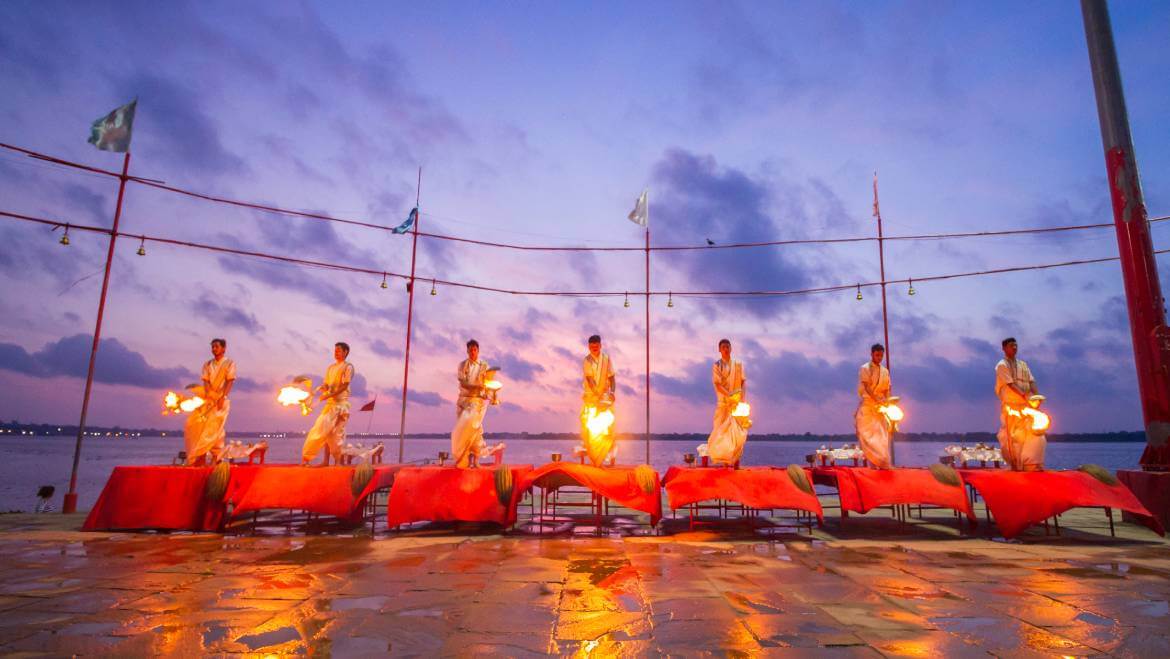
Embrace the spiritual whirlwind in you..
India can be rightly called the ‘Land of Faith’. Trudge through the mighty mountains and you shall experience divine presence or traverse through the meandering alleys, where spirituality combined with history waits to quench your spiritual thirst.
The existence of a large number of temples, mosques, churches, Gurudwaras and monasteries in India beckons the traveler to visit a country that is tolerant, spiritual and most of all diverse yet united.
Spirituality has propelled many ordinary destinations into significant religious places in India. As a result, along with a large number of pilgrims that visit these religious destinations once a year, many travel enthusiasts have started to throng these hubs. Tourism has grown manifold and so has the fame of India.
Let us together get acquainted to a different and vital side of the country and learn about these fascinating religious tourism places in India:
List of 30 Famous Religious Tourism Places in India
Recommended popular religious tour packages.
- 11 Nights 12 Days Chardham Yatra Package
- 11 Nights 12 Days South India Temple Tour
- 3 Nights 4 Days Tirupati Bala Ji Darshan Tour
- 6 Nights 7 Days Hemkund Sahib Yatra Tour
Vaishno Devi Temple, Jammu & Kashmir
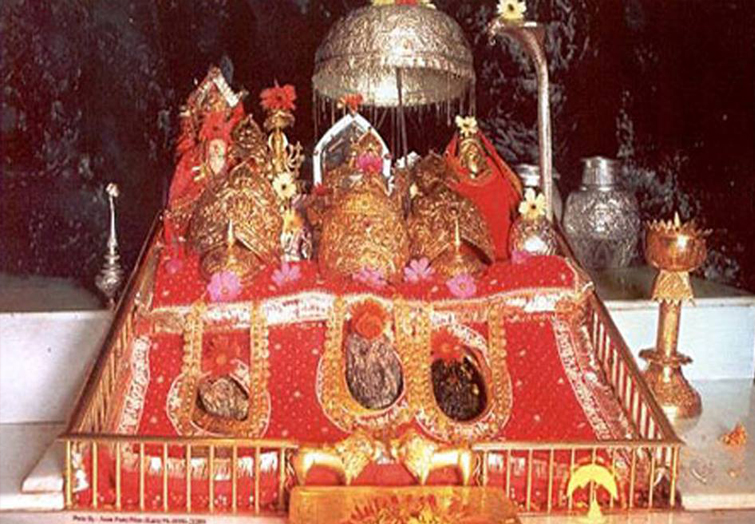
‘Receive Strength at the Earthly Abode of Goddess Shakti’
From high up in the mountains, Mata Vaishno Devi calls out to her devotees… Situated on the Trikuta Hills in Jammu, the abode of Mata Vaishno is amongst the most popular pilgrimage in India.
Experience an indescribable delight in taking an arduous trek that further leads to the caves where the goddess presides over and bestows countless blessings. Beautiful landscape, pervading divinity and thrilling adventure. This is one journey in India that will remain etched in your memories forever.
Recommended Tour Packages
- 2 Nights 3 Days Vaishno Devi Tour Package
- 3 Nights 4 Days Vaishno Devi Tour with Patnitop
Also Read: Interesting Facts about Vaishno Devi Temple
Golden Temple, Swarn Mandir/Harmandir Sahib in Amritsar
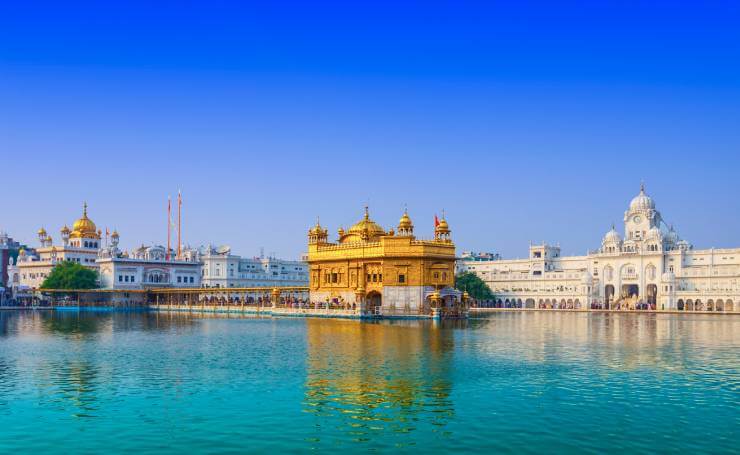
‘Set Your Eyes on the Vast Horizon and Divinity is all you can see’
The unparalleled reflection of the pious golden edifice on the ambrosial nectar (lake) and the horde of pilgrims loitering in the shrine complex urge one to visit this popular religious place in India.
Built by the fourth Sikh Guru- Ramdass Sahib Ji, Gurdwara Harmandir Sahib is the most important Sikh pilgrimage site to visit in India. The golden gilded temple commemorates a number of Sikh historical events. A bringer of peace, the Golden Temple is nothing short of a legacy in India.
Other Interesting Blog to Read
- Popular Gurudwaras in India
Sun Temple (Surya Mandir) in Konark, Odisha
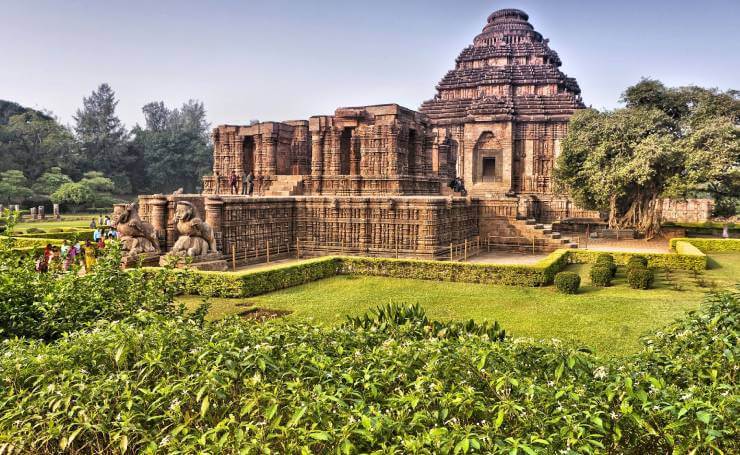
‘Pay Homage to the Source of Power and Victory’
The masterpiece of Indian architecture, Sun Temple is the epitome of exquisite architecture and unmatched spirituality. Situated in Konark, Odisha, the Sun Temple boasts of a massive size and is an incredible example of genius. The Sun God sitting on a majestic chariot depicts the victory of King Narsimhadeva I (who defeated a number of Muslim invaders).
The incredible architecture that includes 12 pairs of carved wheels, hall of offering, imposing pyramidal roof and erotic scenes have been the key driving force for art lovers and travel enthusiast who visit here, thereby making the Sun Temple one of the best places to see on a religious tour in India.
- Most Famous Temples in India
Jagannath Temple in Puri, Odisha
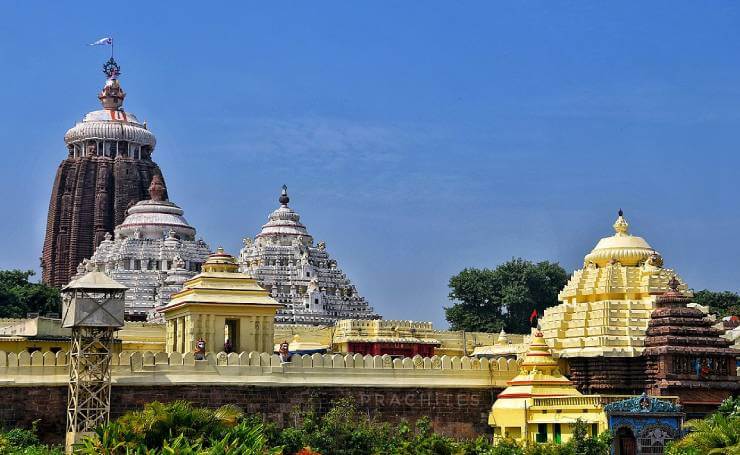
‘The Lord of the Universe Watches Over You…’
An important pilgrimage in India, Jagannath Temple is the finest monument in Odisha. The main deities presiding over the temple are Lord Jagannath, Balabhadra and Goddess Subhadra.
Although a popular pilgrimage, Jagannath Temple comes to life during the annual Rath Yatra when a very large number of people throng the temple. The sacred shrine is believed to be the authentic reflection of Indian culture.
Also Read: Puri Tourism Guide
Somnath Jyotirlinga, Gujarat
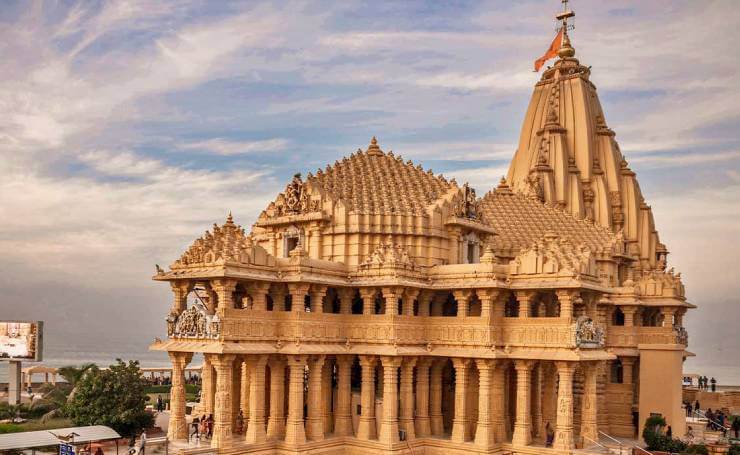
‘Let the Protector of Moon Safeguard You from all Tribulations’
Reckoned to be the first Dwadash Jyotirlinga (Pillar of Light) of Lord Shiva, Somnath Jyotirlinga in Gujarat holds an important place in India. The survivor of many attacks in the past, Somnath Jyotirlinga has been a source of divinity and spirituality for many Hindu pilgrims.
Situated on the shores of Arabian Sea, this sacred shrine calls out to devotees from afar and blesses innumerable times. Feel the power of spirituality and lose yourself in the devotion at this holy place in India.
Other Interesting Blogs to Read
- 12 Jyotirlinga Temples in India
- Best Places to Visit in Gujarat
Ranakpur Temple, Rajasthan
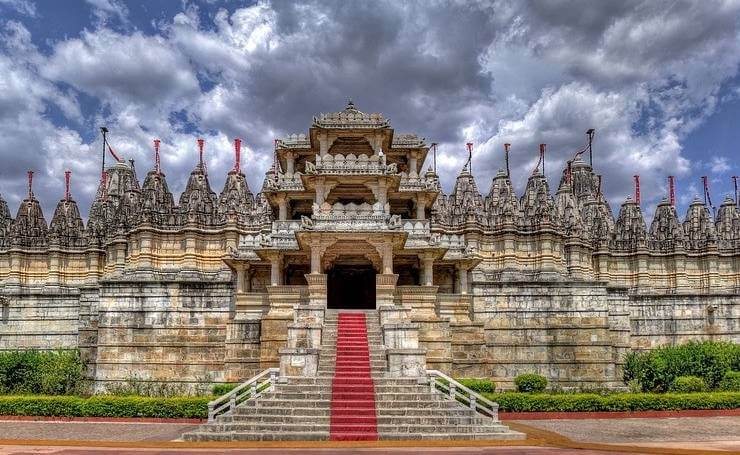
‘Avail Spiritual Independence and Experience Paramount Divinity’
Humility is the greatest virtue and Jainism preaches just that! Situated in Ranakpur village in Rajasthan, Ranakpur is one of the best places of Indian pilgrimage tourism. The Ranakpur temple is one of the oldest Jain temples in India and thus holds a lot of importance for devotees.
Pilgrims from all over the world pay a visit to this temple that has majestic architecture and beautiful surroundings. Imbue yourself in the tranquil ambiance here and you shall definitely seek divinity that does not match anything ordinary.
- Best Places to Visit in Rajasthan
- Must Visit Temples in Rajasthan
Tirumala Venkateswara Temple in Tirupati
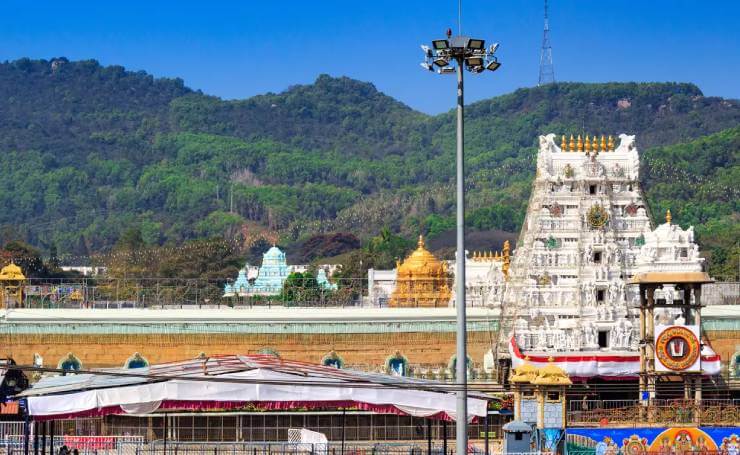
‘Receive the Blessings Showered from the Venkateswara Hill’
The earthly abode of Lord Venkateswara (incarnation of Vishnu), Tirumala Venkateswara Temple is situated on the last hill of the Seshachalam range in Tirupati, Andhra Pradesh.
Like many temples in south India, this holy temple is known for its exquisite architecture. It is also amongst the most visited Hindu temples in India as it is said that the temple attracts 60,000 pilgrims each day.
One must attend the Puja that is accompanied by many hymns and praises giving it a touch of unmatched divinity. The Laddoo Prasadam is yet another attraction of Tirumala Venkateswara Temple.
- Top Places to Visit in Andhra Pradesh
Shri Hemkund Sahib, Uttarakhand
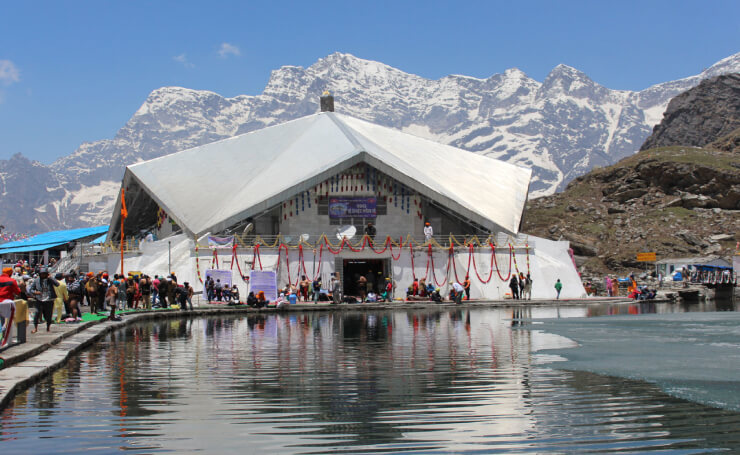
‘Find Peace in the Solitude of Hemkund Sahib’
Situated in one of the most scenic locations in the country, Hemkund Sahib adds charm to religious tours in India. It is the crowning glory of Chamoli District. Unlike other Sikh pilgrimages in India, Hemkund Sahib has a pentagonal structure.
The scenic beauty of the place is worth mentioning as this shrine is nestled amidst lofty hills that are covered with snow. One shall be stunned with the kind of devotion that the pilgrims show here despite the adverse climatic conditions. The spiritual ambiance at Hemkunt Sahib may pursue you to stay a bit longer here.
Also Read: Shikh Religious Tourism in India
Dargah Gharib Nawaz in Ajmer, Rajasthan
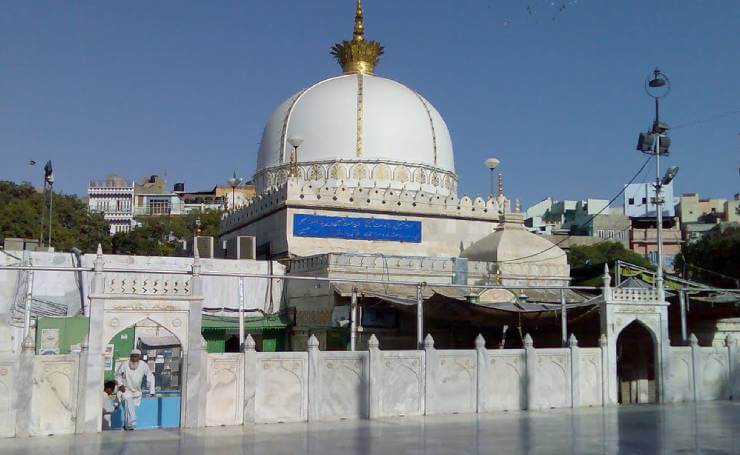
‘Return with all Your Wishes Fulfilled’
Khwaja Moinuddin Chishti lay in peace here, listening to people’s wishes and fulfilling them. Once you enter through the gate of the Dargah, a queer peace takes over you. A sacred shrine in Ajmer, Gharib Nawaz Dargah Sharif is visited by millions of devotees every year from all over the world.
The Dargah for many reasons captivates one’s heart; there is certainly something that is magical about this place that people from different faiths come and worship here. Although the dargah is always crowded, the best time to visit Ajmer Sharif is during the Urs festival. The place comes to life during this festival that is held annually.
Also Read: Popular Tourism Places in Ajmer Rajasthan
Velankanni Church, Tamil Nadu
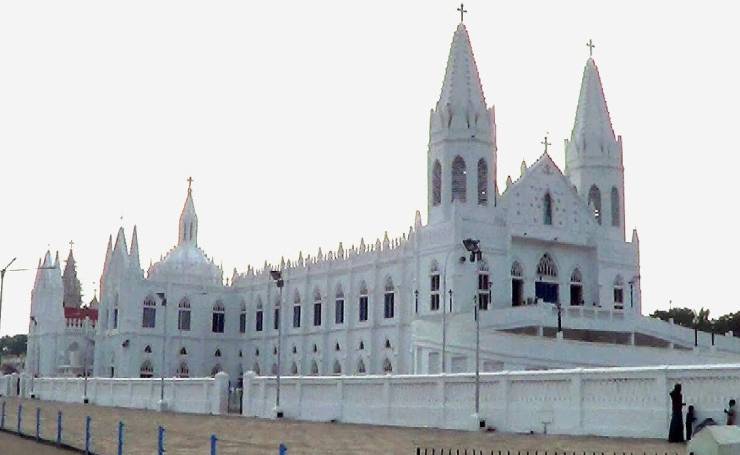
‘Allow Our Lady of Health to Bless You with Good Health’
Religious tours in India would be incomplete if you miss out on Velankanni Church, situated in the Nagapattinam district of Tamil Nadu. Like many gothic style churches, Velankanni Church or the Basilica of Our Lady of Good Health has graceful architecture but what attracts tourists the most to this church is the construction history of the Church.
Believed to have been built by a Portuguese sailor who survived a violent sea storm as a gratitude to the Supreme Power, this church is indeed one of the important pillars of faith in India. Each year The Feast of the Nativity of Mary is celebrated here and is attended by millions of devotees from around the globe.
Also Read: Must Visit Churches in India
Amarnath Cave, Jammu and Kashmir
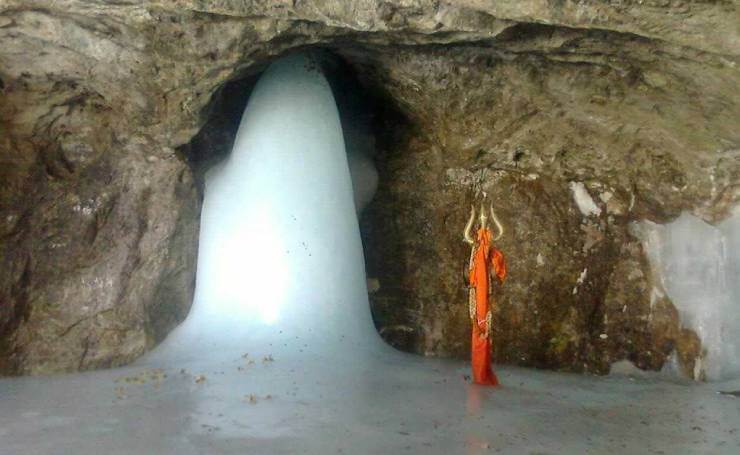
‘Experience Impeccable Divinity and the Existence of Supreme Power’
Baba Barfani calls out to his devotees spread all over the world to first take up an enthralling trek and then receive bountiful blessings from him. The holy Amarnath Cave is situated in the beautiful state of Jammu and Kashmir and can only be reached after a rigorous trekking expedition.
The cave holds importance as one of the ancient pilgrimages in India. The legend has it that Lord Shiva revealed the secret of immortality to his consort Goddess Parvati here, which was overheard by a pair of pigeons. It is also believed that even today, a pair of pigeons can be seen in the cave.
Amarnath is famed for the Linga that is created naturally by ice here every year. The Amarnath Yatra is an annual event in which pilgrims are allowed to trek to the cave temple.
- Most Popular Shiva Temples in India
Varanasi, Uttar Pradesh
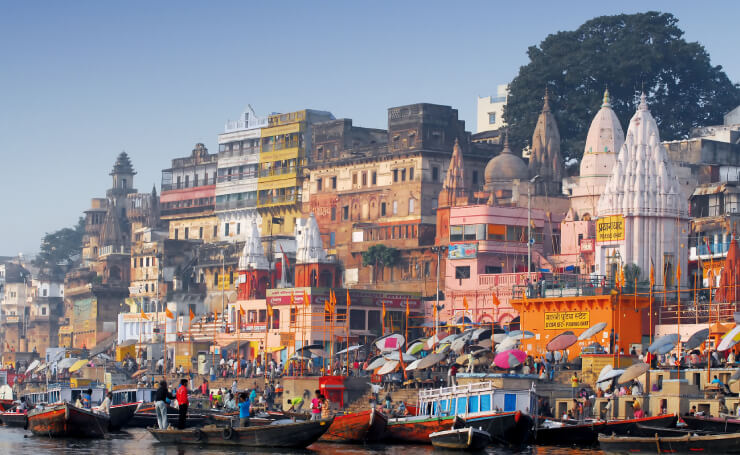
‘The City that Washes Away Sins’
A centre of faith for the Hindus, Varanasi in the state of Uttar Pradesh is a famous pilgrimage in India. Incredibly colourful and sacred, the beauty of Varanasi lies in the crowd of devotees who throng here every single day from one part of the country or the other.
The holy Ganga meandering through the city undoubtedly amplifies the sanctity of Varanasi. Also, the Ganga Arti performed ritualistically every morning and evening enhances the divinity. Devotees keeping faith in the power of the city to provide Moksha and cleansing their sins keep Varanasi always a favourite religion in India.
- Why River Ganges Called the Lifeline of India
- Varanasi Luxury Cruise: The Stylish Way to Explore Varanasi!
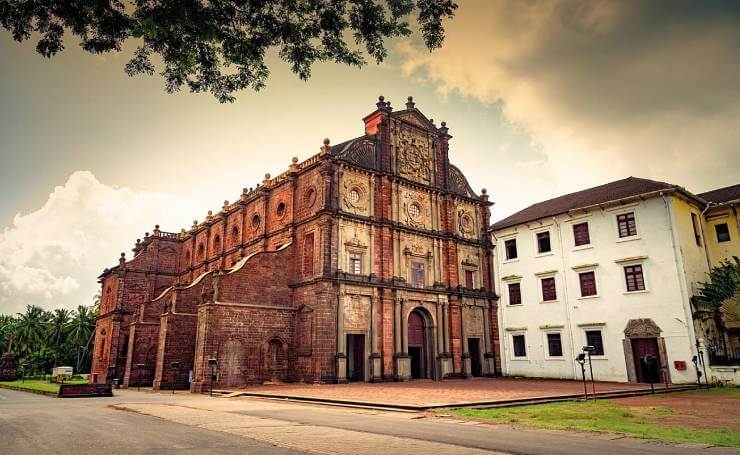
‘Seize the Blessings of the Supreme amid Arresting Architectural Brilliance’
Goa by no means is a cliche pilgrimage destination in India; however, the number of churches in Goa justifies why it should be in the list of religious tourism places in India. A legacy of the Portuguese civilization that ruled the state for over a very long period, the Churches in Goa are worth exploring.
Along with being an epitome of Christian faith, these edifices contribute largely to the architectural collection of India. Amongst the most famous churches in Goa are Basilica of Bom Jesus, Church of the Lady of Immaculate Conception, Church of St. Lawrence and Church and Convent of St. Francis of Assisi.
- Best Places to Visit in North Goa
- Top Places to Visit in South Goa
Dwarka, Gujarat
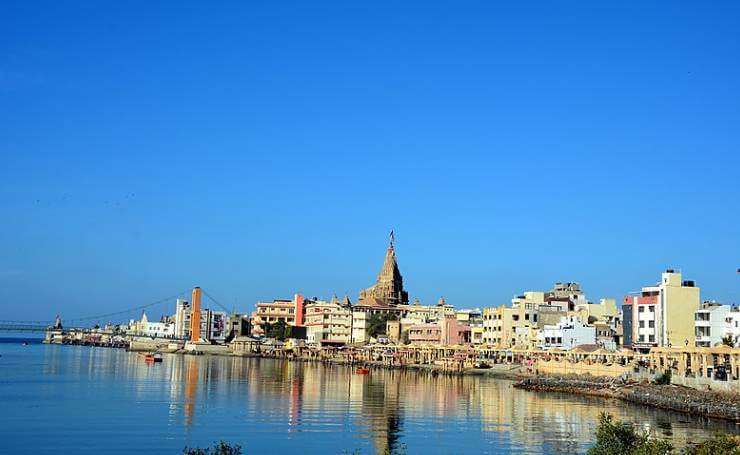
‘Enter the Kingdom of Lord Krishna’
Situated on the western tip (Gujarat) of India, Dwarka is the land of unparalleled spirituality. It is said that when Lord Krishna escaped from Mathura, he made the city of Dwarka his capital. Since then, this fascinating city has been luring devotees from across the world.
In Dwarka, Dwarkadhish Temple is one of the most popular shrine of Lord Krishna. The very journey to this divine temple is a one step closer to attaining Nirvana. The temple yatra of Dwarkadhish is an integral part of the divine Char Dham Yatra. The white attire of local men keeps up with the sanctity of the place.
This fascinating town of Dwarka shall take you back in time of the Mahabharata. The 52 yard flag of dwarkadhish temple is the most fascinating sight to behold as it is changed 5 times a day by Guggali Brahmin, thrice in the morning, twice in the evening. One must visit the divine temple of Dwarkadhish to get eternal peace.
- My Best Travelling Experience of Dwarka and Somnath in Saurashtra Gujarat
Rishikesh, Uttarakhand
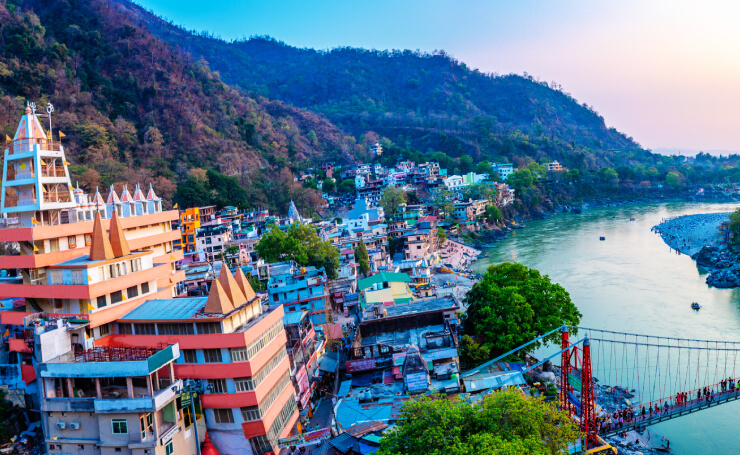
‘Walk Through the Land of Serenity’
The emerald Ganga, innumerable Hindu temples and the heavy settlement of yoga centres, in Rishikesh divinity has been redefined. Preserving the ancient Hindu practice called Yoga, Rishikesh opens a door to a different level of spirituality in India.
At Rishikesh one can praise nature in its truest forms and take a chance to lose himself in it. Therefore, this exceptional city makes for an incredible religious place to visit in India.
Also Read: Popular Tourist Attractions in Rishikesh
Mathura, Uttar Pradesh
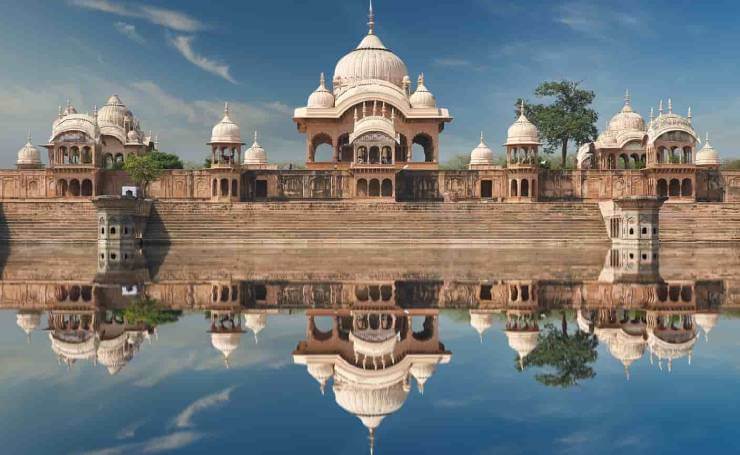
‘Rejoice in the Land of Krishna’
The birthplace of the Hindu God Krishna, Mathura in the state of Uttar Pradesh can rightly be called a blessed land. Today, the town is dotted with a large number of temples including the Krishna Janmabhoomi Temple that is thronged by a large number of devotees all through the year. However, Janmashtami is one festival during which this small town becomes overcrowded yet full of colours.
- Must Visit Lord Krishna Temples in India
Vrindavan, Uttar Pradesh
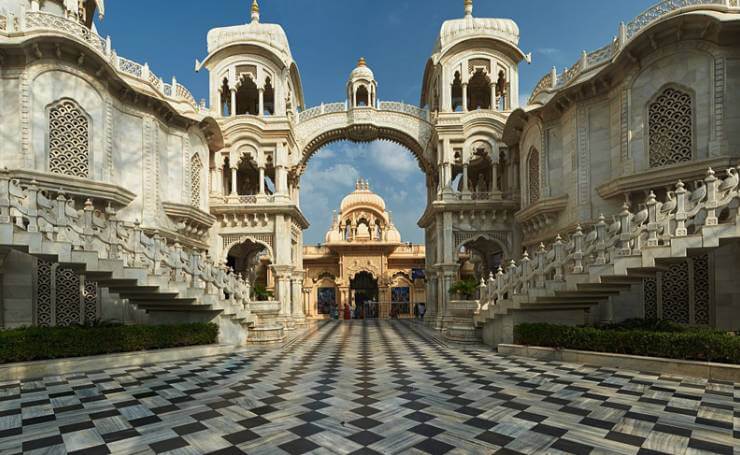
‘Witness the Spiritual Illumination at the Land of Radhe Radhe’
Vrindavan in Uttar Pradesh is the city where Lord Krishna spent his childhood. Boasting about innumerable flashes from the historical pages, Vrindavan offers a journey back in time when Bal Gopal became Kanha and then finally Lord Krishna.
Each meandering alley has traces of holiness and is blessed with small and big temples that are dedicated to Radha and Krishna. As sweet as the Peda of Mathura is to the tongue, so is the ‘Radhe Radhe’ of Vrindavan to the ears. Inarguably one of the popular pilgrimage destinations in North India, Vrindavan lets you experience the spiritual illumination.
Also Read: Popular Tourist Attractions in Vrindavan
Haridwar, Uttarakhand
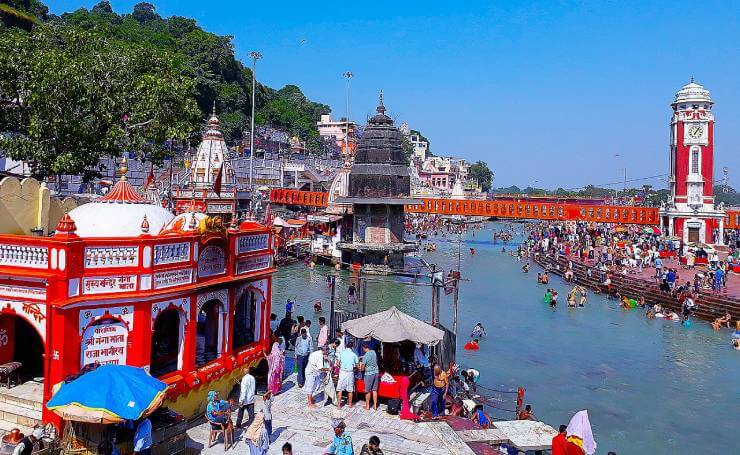
‘Enter through the Gate of Hari and Receive Countless Blessings’
Haridwar , located in the lap of mystical Uttarakhand is nothing short of an empyrean for the Hindus. Located by the holy river Ganga, the sacred town offers a great peace of mind.
Watch the flickering Diyas floating on the sparkling river along with the energetic Ganga Aarti in the evening and loiter around Har ki Pauri to seek unmatched divinity in Haridwar.
The Kumbh Mela, which happens once in every 12 years attracts millions to the city; nonetheless the city remains crowded with devotees all year round.
- Must See Places in Haridwar
Rameshwaram, Tamil Nadu
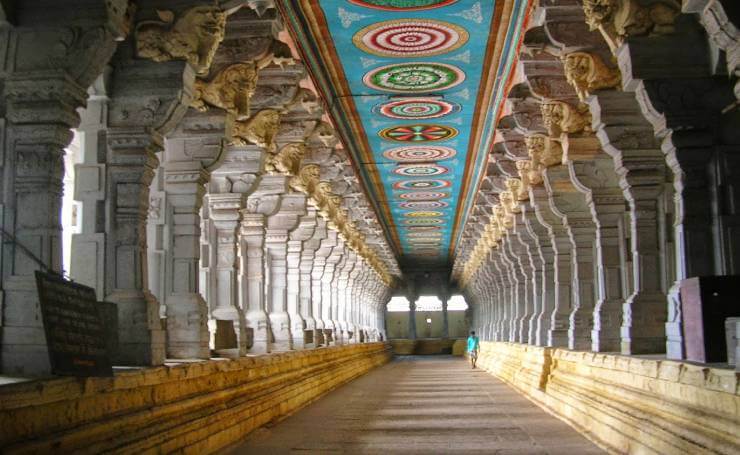
‘Pay Gratitude and Cleanse Yourself from the Sin’
Rameshwaram in the state of Tamil Nadu is one of the sites of the pious Char Dham yatra in India. Situated on an island called Mannar, this sacred destination is believed to be the place where Lord Rama worshipped and repented after killing Raavana.
Spirituality is set deep in Rameshwaram and the best place to experience it is at Ramanathaswamy temple. This beautiful temple is known for its incredible architecture that weaves divinity and culture together.
- Best Places to Visit in Rameshwaram
Shri Badrinath Dham, Uttarakhand
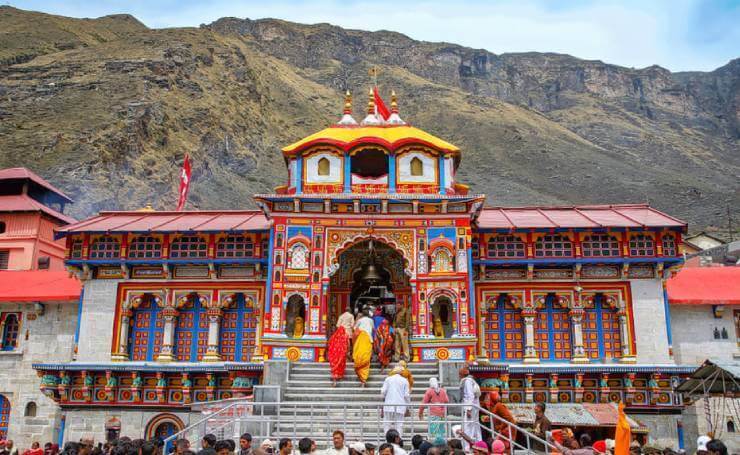
Climb the Staircase of Spirituality’
Nestled in the pristine Himalaya, Badrinath Temple in Uttarakhand is a door to unmatched spirituality. It is the place where everything is cuddled by divinity.
Badrinath is believed to be the home of Lord Vishnu or Badrinath Ji, who had come here to meditate after being rebuked by Narad for being too indulgent in worldly affairs. Thus, today Badrinath offers confinement from the materialistic world and takes you a step closer to the Supreme Power.
It is the vital destination for Chardham yatra in India and Chhota Chardham in Uttarakhand.
- Why is Char Dham Yatra Extremely Significant for Hindus?
- History of Char Dham Temples of Uttarakhand
Hampi, Karnataka
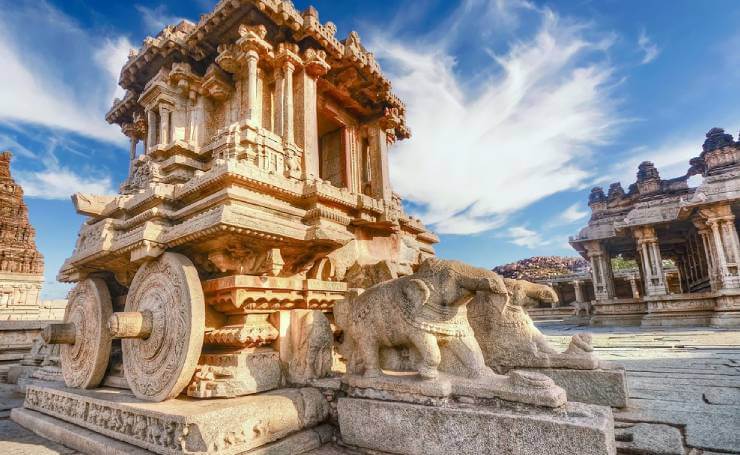
‘Lose Yourself in Bewitching Divinity’
In the ruins of Hampi (Karnataka) lay innumerable temples that not only stuns but take you on a spiritual journey. Not all temples are in ruins in Hampi, as there are still some temples that sing the glory of the magnificent architectural designs and innovative ideas.
Hampi is indeed the perfect destination for spiritual tourism in India as it allows a peek inside the rich Indian culture, of which religion was an essential part. Virupaksha Temple is amongst the most famous temples in Hampi.
- Temple & Sightseeing Tour to Karnataka
Madurai, Tamil Nadu
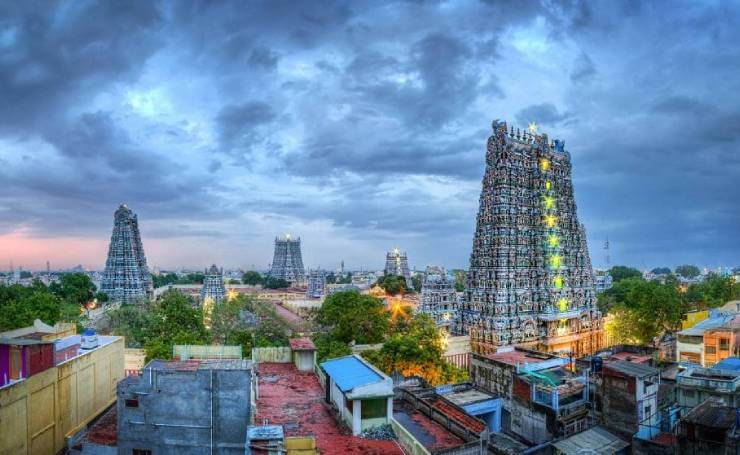
‘Plunge Your Soul in the Serene Pool of Holiness’
Heart-warming is the ambiance of Madurai (Tamil Nadu), which is also rightly known as the ‘Temple Town’. Legends have it that drops of honey fell from the matted hair of Lord Shiva who had appeared in the dream of the then King of Madurai and that is how the city got its name.
For centuries Madurai had been an important learning centre and a Hindu pilgrimage site in India. Madurai is also known for Meenakshi Amman Temple , which is one of the most famous temples in India. Walk through the alleys of Madurai and soak yourself in the sheer power of divinity.
- Famous Mythological Characters of Hindu Sanatan Dharma
Bodhgaya, Bihar
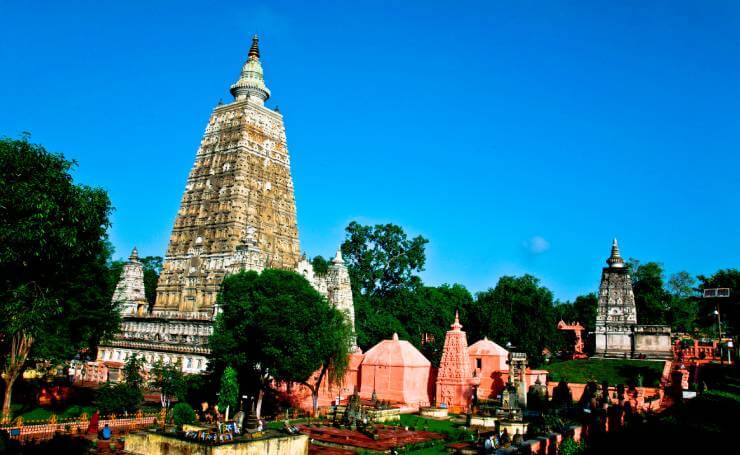
‘Get Enlightened in the Land of the Buddha’
Witness the historical place called Bodhgaya in Bihar, where Lord Buddha is believed to have been enlightened. Bodhgaya offers Buddhist pilgrims the ultimate place to pray and meditate.
The feeling of being on the land where Budhha once himself walked on is truly commendable. Mahabodhi Temple along with several other temples in Bodhgaya are frequented by many pilgrims that visit here from all over the world.
- An Insight into the Life and Teachings of Gautam Buddha
Shirdi, Maharashtra
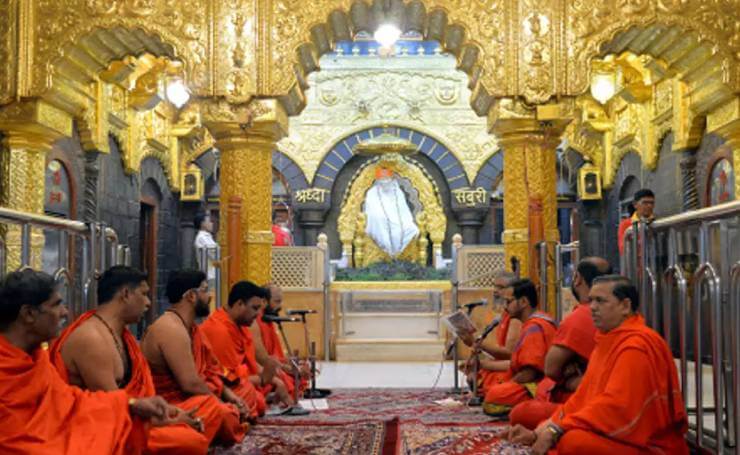
‘Take the Path of Divine Consciousness and Surrender to the Guidance’
Forget about religion, caste, creed and other forms of discrimination, Shirdi in Maharashtra is the gateway to sheer spirituality. All his life the highly revered Sai Baba preached about One God (Sab Ka Maalik Ek) and thus earned himself many followers.
Today, his native place, Shirdi is thronged by multitude of devotees irrespective of religion, color or creed seeking peace, spirituality and paying homage to this great saint. Therefore, Shirdi is one of the most visited religious places in India.
- Best Places to Visit Near Mumbai
Leh, Ladakh
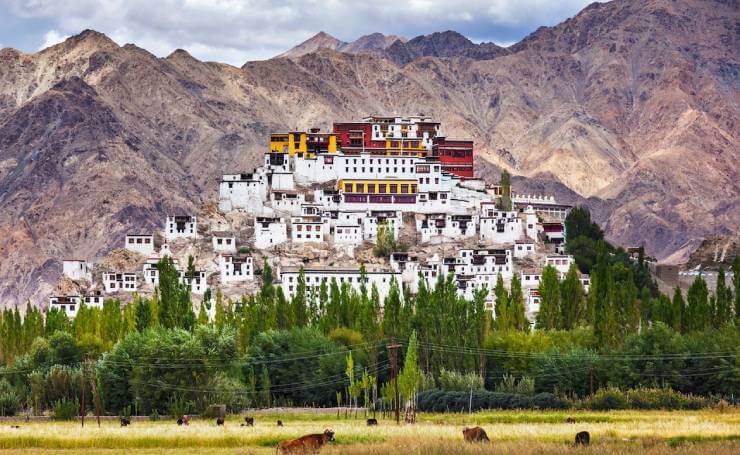
‘Imbibe from the Cup of Sanctity’
Leh is not only the haven for adventure seekers, it is also the paradise for those seeking inner peace. Dotted with a large number of Tibetan monasteries, Leh Ladakh lets you drench in the rain of spirituality. Most of the monasteries in Leh contain numerous stupas, statues, wall paintings, Thangkas, swords and large pillars that are engraved with the Buddha’s teachings.
While you are in Leh you cannot ignore these sanctified structures that often take you on a spiritual journey. Shey, Hemis, Lamayuru, Alchi and Thiksey are some of the most popular monasteries around Leh.
Also Check out: Complete Ladakh Tourism Guide
Omkareshwar and Mamleshwar Temple, Madhya Pradesh
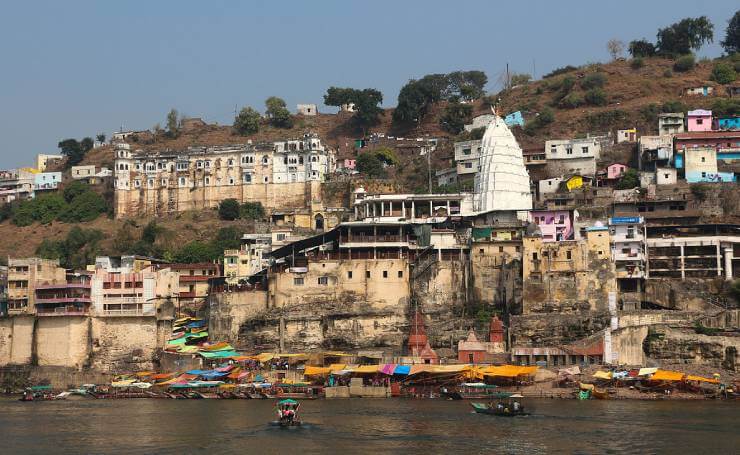
‘Dip into the divine waters and embrace the soul soothing aura’
The temple of Omkareshwar is one of the most significant pilgrimage sites for Hindu devotees. Located on the banks of the great expanses of River Narmada in Omkar Mountain, it is one of the 12 jyotirlingas of Lord Shiva. Omkareshwar, the name is derived from the sacred word ‘Om’.
The five storeys of temple are decked with different deities. Don’t forget to take a dip into the holy water of River Narmada before visiting Omkareshwar Temple as it is considered auspicious. The temple has a large Sabha Mandap which stands on 60 brown huge stone pillars.
Also visit Mamleshwar Temple. It is separated to Omkareshwar by a narrow ridge. It is believed that they are single forms of shiv lingam which is split into two.
In the soul soothing aura of the temples of Omkareshwar and Mamleshwar you will discover the true essence of your soul.
- Must See Temples in Madhya Pradesh
Karni Mata Temple, Rajasthan
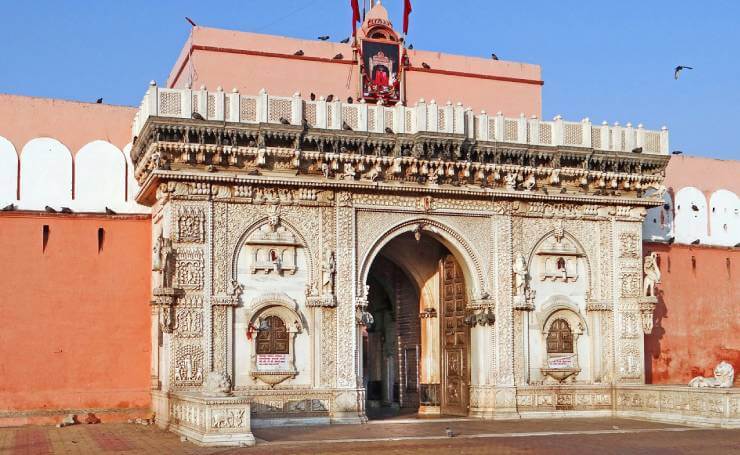
‘Take the holy blessings in the Serene abode of Rats’
Located 30 km away from Bikaner, the divine Karni Mata temple is a blissful abode of rats (also known as Kabbas). It is one of the most popular religious sites in India. This temple is dedicated to Karni Mata, an incarnation of goddess Durga.
It is said that Laksmana, the stepson of Karni Mata drowned in Kapil sarovar while trying to drink water. Mata Karni prayed to Yama- the god of Death. Yama God not only brought back Laksmana to life but also reincarnated all her sons in the form of rats.
The divine temple of Karni Mata has a mysterious vibe which will elevate your experience to a whole new level. Rats in this temple are harmless, they don’t spread any disease. Devotees get the prasadam tasted by these rats.
It is said that 600 families of the Charan Singh clan claimed to be the descendants of Karni Mata and are here in the form of rats. The temple has a blissful aura. Don’t forget to make a wish to the Lion’s ears which is at the main gate of the temple. Your spiritual experience would be incomplete without visiting the magnificence that lived on for centuries in the golden city, Rajasthan.
- Best Places to Visit in Bikaner Rajasthan
Meghna Cave Temple, Arunachal Pradesh
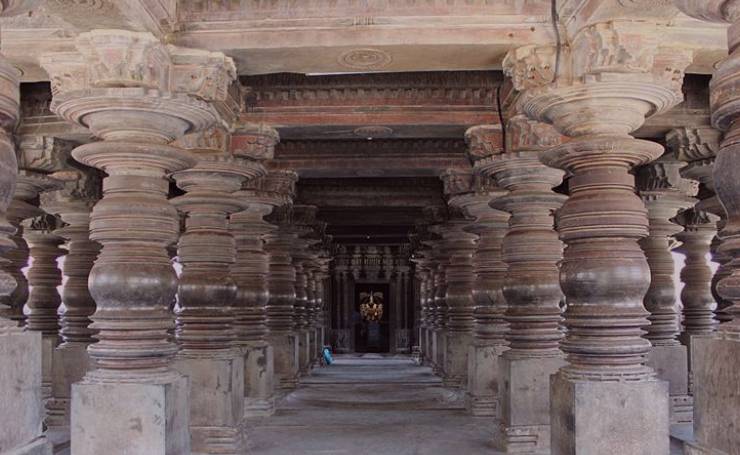
‘Feel the divinity of the mysterious cave temple’
The Meghna temple built in a cave some 5000 years ago stands still in pride on the hilltop at an altitude of 300ft to spread the divine euphoria in the city of Arunachal Pradesh, is a must visit place in India.
Thousands of devotees flock here during Makar sankranti and Shivratri. According to Kali Purana the temple is dedicated to Lord Lakulisha, 28th incarnation of Lord Shiva. Lush green forests and mountains here are dipped into the divine aura of this blissful cave temple which will delight your soul.
It is one of the must visit religious places in India. This cave temple was discovered in 1962. Detailed carvings in Sanskrit in the cave, swiftly flowing rivers and scenic surroundings will definitely blow your heart away.
Also Read: Pilgrimage Tourism in Arunachal Pradesh
Thousand Pillar Temple, Telangana
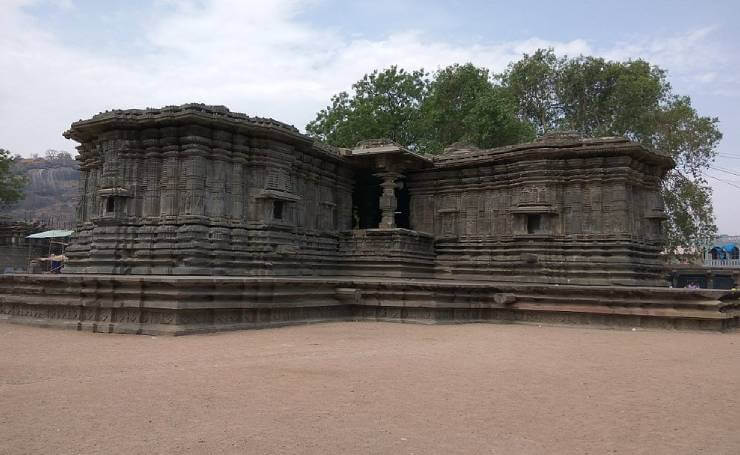
‘Revel in the ancient vibes of the blissful Thousand Pillar Temple’.
The historical grandeur of Warangal blaze more with brightness by the magnificent Thousand Pillar Temple, which is of unequalled loveliness and serenity. It is one of the oldest temples in South India. It is said that the temple took 72 years to be built. This mesmerizing piece of spiritual bliss is dedicated to Lord Shiva, Lord Surya and Lord Vishnu.The temple is built in the shape of a star. It is popularly known as Rudreshwara swamy Temple.
The temple is a marvellous example of Kakatiya architecture and art. You will be mesmerized by the charms of polished dolerite and granite stones, sculptures and rock cut elephants. The dolerite Nandi idol is the main site of attraction. It is considered as a heritage attraction in Warangal. If you are in the blissful shores of Warangal, Don’t forget to visit this divine temple.
- Best Places to Visit in Telangana South India
Dakshineswar Kali Temple, West Bengal
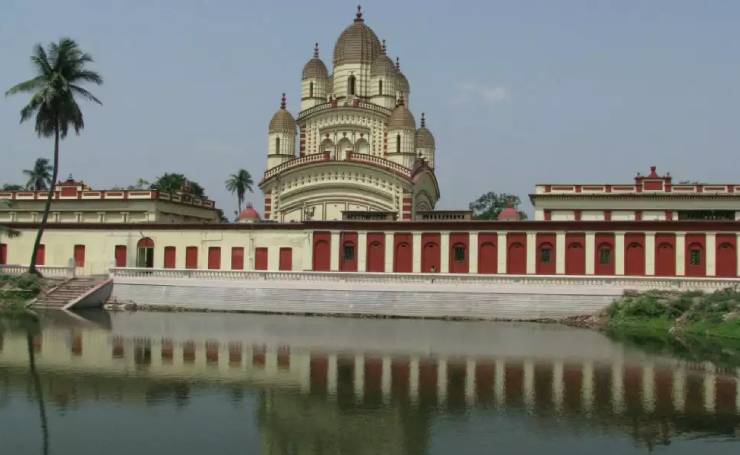
‘Divine destination and a gateway to peace’.
Nestled in the delightful eastern banks of Hooghly River, lies the gateway to blissful vibes and divine serenity in the form of Dakshineswar Kali Temple. Thousands of devotees from all over the world come to Kolkata to dip themselves into the divinity of this mesmerizing temple. The temple is dedicated to goddess Bhavtarini – a form of goddess Kali. This temple was built by Rani Rashomoni in 1855.
The temple where gods have long been old and the divine aura never cease to attract the devotees was once upon a time dense forest. The nine spired temple has a grand courtyard. Apart from the main shrine, there are 12 shrines dedicated to Lord Shiva along the riverfront.
The temple of Dakshineswar is an absolute bliss as it is built in Nava Ratna style of architecture. The divine aura of the temple reverberates in the sacred waters of Hooghly River is a blissful sight to behold. This temple is one of the most visited places in Kolkata.
- Best Places to Visit in West Bengal
- Popular Pilgrimage Destinations in North East India
- Best Pilgrimage Places to Visit in North India
Like & Follow our social media accounts at Twitter , Facebook , Linkedin & Instagram for getting the latest updates & offers on holiday packages.
Disclaimer: We do not take credit for some of the licenced paid images used in our blogs, whether from Google Images, Fotolia & Shutterstock. All such images are the copyrights of their respective owners and we try to provide credit for them wherever we can. If, however, any copyright image has been used on our blog, the concerned person can either mail us directly to remove the image or provide credit to whomsoever the image may belong to.
Frequently Asked Questions
Q. is there any dress code to follow in a religious place in india.
There is no dress code to follow in any religious place of India but one should respect the decorum of a sacred place. Always wear a decent and covered dress in any religious place in India.
Q. What are some useful tips to consider while travelling to a religious place?
Some useful tips to consider while travelling to a religious place in India are -
- One should take a bath and always wear clean clothes while entering any sacred place.
- Dress and behave decently. In some places a stole or scarf is needed to cover your head.
- Smoking and public display of affection is not allowed in any religious places.
- Most of the temples do not allow photography.
- Beware of the people who ask for huge amounts of money for donation or Seva.
- Accept the prasadam of the temple with both the hands.
Q. What are the best tour packages for religious travel in Tour My India?
Tour My India offers customized religious tours for all the major religious places in India. You name it and we offer you the best facilities available.
Tour My India offers the best tour packages for religious travel in India-
- Hindu Pilgrimage Tours
- Buddhist Pilgrimage Tours
- Islamic Pilgrimage Tours
- Jain Pilgrimage Tours
- Sikh Pilgrimage Tours
Q. What is the best time to visit Omkareshwar in Madhya Pradesh?
The best time to visit Omkareshwar is October to March. The weather will be pleasant and is perfect for sightseeing also.
Published: 23 Apr, 2021
About the author
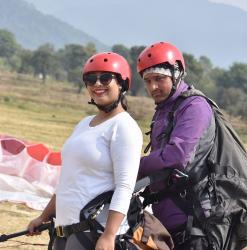
Nidhi Singh
From the Lake District, Nainital, Nidhi Singh is a travel writer whose love for mountains can be seen in her write ups. Talk about solo travelling, indulging in adventure activities, binging on good food, planning budget trips or the Aurora Borealis and you will get all her attention. It is the wanderlust that keeps her going and if at all she could get one wish granted she would love to live a life less ordinary. Follow her on Twitter , Facebook & Instagram .
Recent Trending Posts
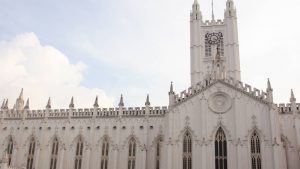
April 16,2024
20 Most Popular Weekend Getaways from Kolkata

April 5,2024
7 Best Places to Spend Your Summer Break in North India

April 1,2024
Now an Intangible Cultural Heritage Under UNESCO, Gujarat’s Garba Shares the Global Stage
- Hill Stations
- Travel Deals
- Amazing Facts
- Travel Experience
- Travel Tips
- Travel Alerts
- Travel Videos
- Edu-Tourism
- Inspirational People
Popular Posts

May 30,2014
20 Highway Dhabas that You Must Stop By

February 12,2014
Top 15 Places for Honeymoon in North East India

September 6,2014
12 Best Beaches in Maharashtra

October 31,2013
Top 15 Wildlife Sanctuaries and National Parks in Kerala

August 27,2014
Best 15 Destinations in India for Solo Women Travellers
International posts.

November 8,2023
10 Best Beaches in Thailand

November 3,2023
Tourism Update – Enjoy Visa Free Holiday Travel in Sri Lanka

Thailand Tourism Update- Indian Travelers Now Get a Visa-Free Entry to Thailand!
Explore best places to visit in india by month.

Best Places in January

Best Places in February

Best Places in March

Best Places in April

Best Places in May

Best Places in June

Best Places in July

Best Places in August

Best Places in September

Best Places in October

Best Places in November

Best Places in December
India tourism important information resources, north india.
- Uttarakhand
- Jammu & Kashmir
South India
- Pondicherry
- Andhra Pradesh
- Mahararashtra
- Dadra Nagar Haveli
- Daman & Diu
Luxury Trains
- Maharaja Express
- Palaces on Wheels
- The Golden Chariot
- The Deccan Odyssey
- Majestic Tourist Train
Quick Links
- Kumbh Mela Haridwar 2021
- MICE Tourism
Subscribe Now! Get features like

- Latest News
- Entertainment
- Real Estate
- PSEB 10th Result Live
- Taylor Swift: A Primer
- Election Schedule 2024
- Win iPhone 15
- IPL 2024 Schedule
- IPL Points Table
- IPL Purple Cap
- IPL Orange Cap
- AP Board Results 2024
- The Interview
- Web Stories
- Virat Kohli
- Mumbai News
- Bengaluru News
- Daily Digest

Places of religious tourism earned ₹ 1,34,543 crore in 2022, reveals govt data
The number of domestic tourists that visited places of pilgrimage were 1,433 million in 2022, while 6.64 million foreign tourists visited india.
The places of religious tourism earned ₹ 1,34,543 crore in 2022, up from ₹ 65,070 crore in 2021, data released by the ministry of tourism said.

While the ministry of tourism does not maintain the revenue generated through religious centres, it does have an account of foreign exchange earnings.
In 2018, the revenue was ₹ 1,94,881 crore, followed by ₹ 2,11,661 crore in 2019 and a significant dip due to the pandemic in 2020 to ₹ 50,136 crore.
Also Read: Tourism sector in focus as govt looks to boost jobs
The number of domestic tourists that visited places of pilgrimage were 1,433 million in 2022, while 6.64 million foreign tourists visited India.
In 2021, the numbers stood at 677 million and 1.05 million, respectively.
“Development of tourism is primarily the responsibility of the concerned State Government/Union Territory Administration, however, Ministry of Tourism under its scheme viz. National Mission on Pilgrimage Rejuvenation and Spiritual, Heritage Augmentation Drive (PRASHAD) provides Financial Assistance to the State Governments/Union Territories for creation of pilgrimage and/or heritage tourism infrastructure at the pre-identified destinations across the country,” the ministry of tourism said.
It has approved a total number of 45 projects in the country under PRASHAD Scheme for an amount of ₹ 1586.10 crore so far.
PRASHAD scheme was launched in 2014-2015 under the ministry of tourism.
The scheme focuses on developing and identifying pilgrimage sites across India for enriching the religious tourism experience.
Join Hindustan Times
Create free account and unlock exciting features like.

- Terms of use
- Privacy policy
- Weather Today
- HT Newsletters
- Subscription
- Print Ad Rates
- Code of Ethics
- Elections 2024
- India vs England
- T20 World Cup 2024 Schedule
- IPL 2024 Auctions
- T20 World Cup 2024
- Cricket Players
- ICC Rankings
- Cricket Schedule
- Other Cities
- Income Tax Calculator
- Budget 2024
- Petrol Prices
- Diesel Prices
- Silver Rate
- Relationships
- Art and Culture
- Telugu Cinema
- Tamil Cinema
- Exam Results
- Competitive Exams
- Board Exams
- BBA Colleges
- Engineering Colleges
- Medical Colleges
- BCA Colleges
- Medical Exams
- Engineering Exams
- Horoscope 2024
- Festive Calendar 2024
- Compatibility Calculator
- The Economist Articles
- Explainer Video
- On The Record
- Vikram Chandra Daily Wrap
- PBKS vs DC Live Score
- KKR vs SRH Live Score
- EPL 2023-24
- ISL 2023-24
- Asian Games 2023
- Public Health
- Economic Policy
- International Affairs
- Climate Change
- Gender Equality
- future tech
- Daily Sudoku
- Daily Crossword
- Daily Word Jumble
- HT Friday Finance
- Explore Hindustan Times
- Privacy Policy
- Terms of Use
- Subscription - Terms of Use
We have updated our terms and conditions and privacy policy Click "Continue" to accept and continue with ET TravelWorld
We use cookies to ensure best experience for you
We use cookies and other tracking technologies to improve your browsing experience on our site, show personalize content and targeted ads, analyze site traffic, and understand where our audience is coming from. You can also read our privacy policy , We use cookies to ensure the best experience for you on our website.
By choosing I accept, or by continuing being on the website, you consent to our use of Cookies and Terms & Conditions .
- Leaders Speak
- Brand Solutions
- Research and Statistics
- India emerges as global pilgrimage destination with ‘flourishing spiritual tourism’ in 2023
Post Covid, especially, spiritual tourism has taken center stage with a significant increase in the numbers of travellers worldwide. In 2022 alone, India had witnessed an astounding 1,433 million domestic tourists undertaking pilgrimages, while 6.64 million foreigners made their way to the country's sacred sites, contributing considerably to tourism recovery.
- Gagneet Kaur ,
- ETTravelWorld
- Updated On Jun 15, 2023 at 04:44 PM IST
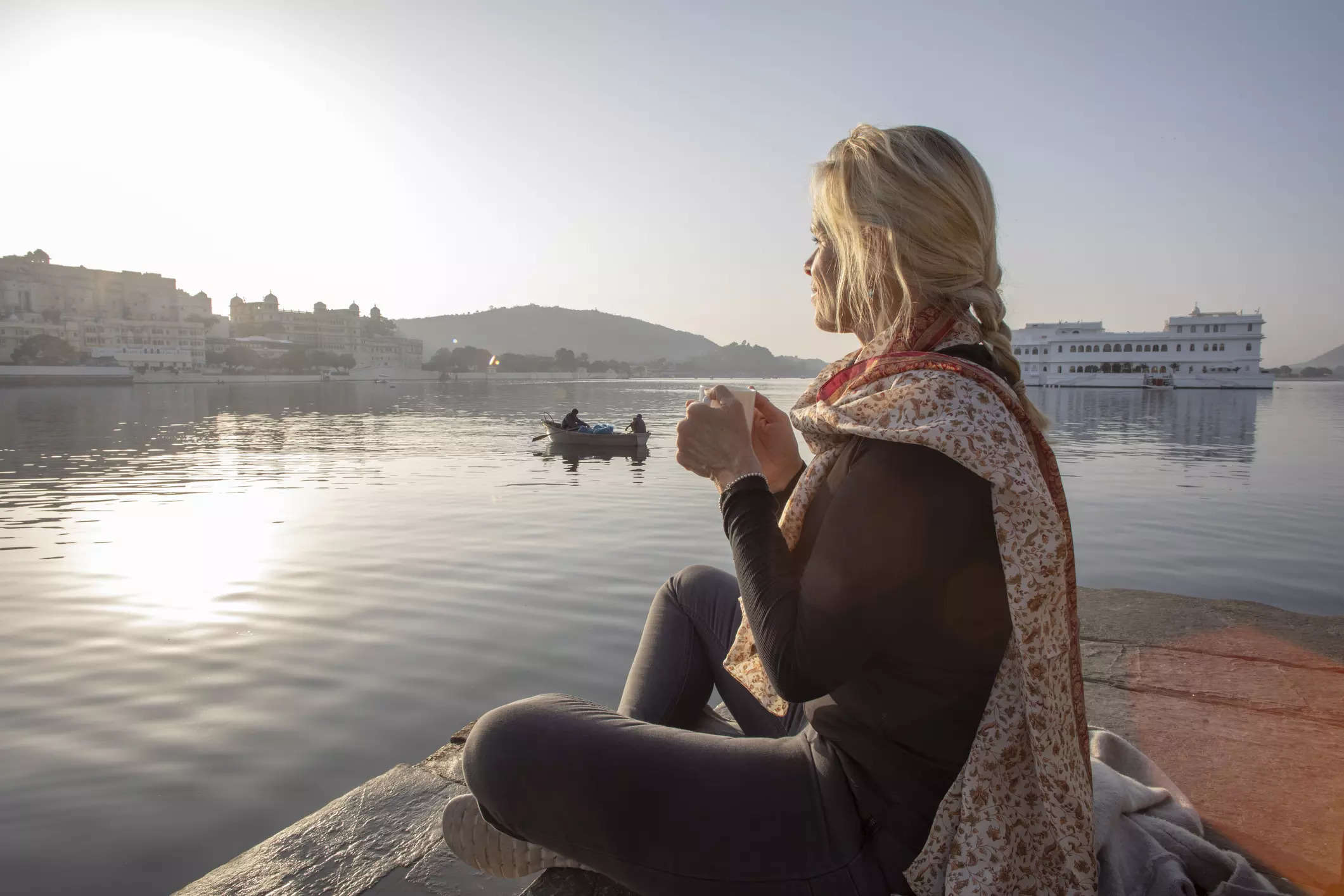
Gujarat’s Vadnagar to become culture & tourism hub; buddhism trail, circuits slated: Official
The historic town is undergoing a massive transformation as the Ministry of Culture is leading the holistic development of the town, planned in four phases. Plans are afoot to push tourism through the Archaeological Experiential Museum, tourism circuits, trails and redevelopment projects. Vadnagar is strategically located near other popular attractions like the Sun Temple of Modhera and Rani ki Vav.
- By Gagneet Kaur ,
- Published On Jun 15, 2023 at 04:44 PM IST
All Comments
By commenting, you agree to the Prohibited Content Policy
Find this Comment Offensive?
- Foul Language
- Inciting hatred against a certain community
- Out of Context / Spam
Join the community of 2M+ industry professionals
Subscribe to our newsletter to get latest insights & analysis., download ettravelworld app.
- Get Realtime updates
- Save your favourite articles
- spiritual tourism
- sabarimala sree ayyappan temple
- manoj sinha
- dakshin kashi
- vaishno devi
- uttarakhand
- religious tourism


Divine Journeys: Religious Tourism In India
Join us on a mesmerizing expedition as we explore the enchanting world of religious tourism in India. Step into a realm where ancient history, unwavering faith, and rich cultural heritage collide to create an extraordinary tapestry of spiritual experiences. With IndianCulture.com as our trusted guide, we will traverse through India’s sacred destinations, unearthing the divine allure that beckons pilgrims from all corners of the globe. Get ready to embark on an extraordinary adventure where every step will lead you closer to the ethereal realms of the divine. Welcome to “Divine Journeys: Religious Tourism in India.”
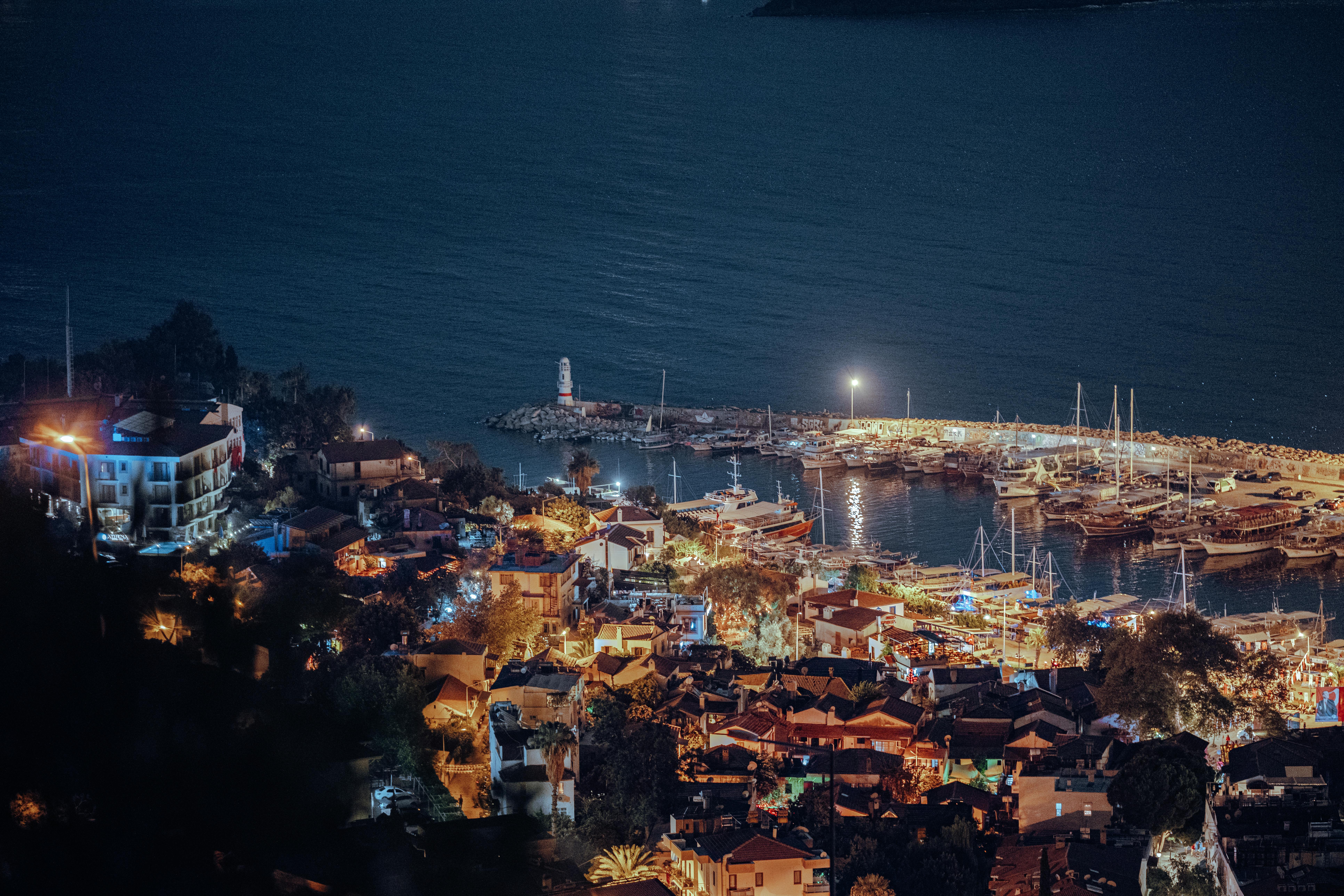
Table of Contents
Overview of Religious Tourism in India
Introduction to religious tourism.
Religious tourism, also known as spiritual tourism or pilgrimage tourism, is a form of travel that revolves around visiting religious sites and participating in religious rituals and events. It is a common practice in many cultures around the world, including India. People embark on religious tourism to seek spiritual growth, connect with their faith, and experience the cultural and historical significance of religious destinations.
The significance of religious tourism in India
Religious tourism holds immense importance in India due to its rich and diverse religious heritage. India is often referred to as the land of spirituality, and its ancient religions like Hinduism, Buddhism, Jainism, and Sikhism have attracted millions of pilgrims for centuries. These religious destinations provide a sense of tranquility, enlightenment, and a chance to explore the profound depths of Indian spirituality.
Popular religious destinations in India
India is home to numerous popular religious destinations that attract travelers from all over the world. Some of the notable ones include:
Varanasi: Situated on the banks of the sacred river Ganges, Varanasi is one of the oldest inhabited cities in the world and a major center for Hindu pilgrimage. It is believed that bathing in the Ganges and performing religious rituals in Varanasi can cleanse one’s sins and attain salvation.
Rishikesh: Nestled in the foothills of the Himalayas, Rishikesh is considered the Yoga capital of the world. It is a revered place for spiritual seekers and offers a serene environment for meditation and introspection.
Amritsar: Known for the iconic Golden Temple, Amritsar is the spiritual and cultural center for Sikhs. The Golden Temple, also known as Harmandir Sahib, is a place of worship, community kitchen, and a symbol of equality and inclusivity.
Bodh Gaya: Located in the state of Bihar, Bodh Gaya is the place where Gautama Buddha attained enlightenment under the Bodhi tree. It is a significant pilgrimage site for Buddhists and attracts devotees from all over the world.
Religious Festivals and Events
Importance of festivals in religious tourism.
Festivals play a vital role in religious tourism, as they offer an opportunity for travelers to witness and participate in religious ceremonies, rituals, and cultural celebrations. These festivals bring devotees together, fostering a sense of community and reinforcing the significance of their religious beliefs.
Popular religious festivals in India
India is known for its colorful and vibrant festivals that celebrate various religious traditions. Some of the popular religious festivals include:
Diwali: Also known as the Festival of Lights, Diwali is one of the most widely celebrated festivals in India. It signifies the victory of light over darkness and good over evil. During Diwali, people illuminate their homes with earthen lamps, exchange gifts, and offer prayers to deities.
Holi: Known as the Festival of Colors, Holi marks the arrival of spring and the triumph of good over evil. It involves throwing colored powders and water at each other, dancing to traditional music, and indulging in festive delicacies.
Navaratri/Durga Puja: Navaratri is a nine-night Hindu festival dedicated to Goddess Durga. Devotees observe fasts, perform traditional dances like Garba and Dandiya, and worship various forms of the Goddess during this period.
Key events and rituals during festivals
During religious festivals, several events and rituals take place that hold deep spiritual significance. For example, during Diwali, people light oil lamps, burst firecrackers, offer prayers to the goddess of wealth, and exchange sweets with loved ones. In Holi, people gather in open spaces to engage in spirited color-throwing battles and celebrate the onset of spring. These events and rituals provide a unique glimpse into the cultural and religious practices of India.

Pilgrimage Sites in North India
The spiritual significance of north indian pilgrimage sites.
North India is replete with pilgrimage sites that have a profound impact on the spiritual journey of devotees. These sites are believed to have been blessed by gods, saints, and enlightened beings, making them centers of deep religious devotion.
Famous pilgrimage sites in North India
Some of the famous pilgrimage sites in North India include:
Vaishno Devi: Nestled in the Trikuta Mountains of Jammu and Kashmir, Vaishno Devi is one of the most visited Hindu pilgrimage sites. Devotees undertake a strenuous trek to reach the shrine of the goddess Vaishno Devi and seek her blessings.
Amarnath Cave: Located in the Himalayas, the Amarnath Cave is revered by Hindus as the dwelling place of Lord Shiva. Devotees undertake a challenging pilgrimage to witness the naturally formed ice lingam inside the cave.
Haridwar: Situated at the foothills of the Himalayas, Haridwar is considered one of the seven holiest places in Hinduism. The city is renowned for its Har Ki Pauri ghat, where millions of devotees gather to bathe in the holy river Ganges and attain salvation.
Folklore and legends associated with these sites
North Indian pilgrimage sites are steeped in folklore, legends, and mythological tales that add to their allure. For instance, Vaishno Devi is associated with the legend of Mata Vaishno Devi who took the form of a goddess to protect her devotees from evil forces. The Amarnath Cave is believed to be the place where Lord Shiva revealed the secret of immortality to his divine consort, Parvati. These stories and legends enhance the spiritual experience of pilgrims and contribute to the cultural fabric of the region.
Pilgrimage Sites in South India
The spiritual significance of south indian pilgrimage sites.
South India is renowned for its ancient temples and pilgrimage sites that hold immense spiritual significance. These sites are not only important for the respective religious communities but also attract tourists interested in exploring the rich cultural and architectural heritage of the region.
Famous pilgrimage sites in South India
Some of the famous pilgrimage sites in South India include:
Tirupati: Located in the state of Andhra Pradesh, Tirupati is home to the historically and spiritually significant Sri Venkateswara Temple. Dedicated to Lord Vishnu, this temple attracts millions of devotees who seek the blessings of Lord Venkateswara.
Rameswaram: Situated on an island off the southeastern coast of Tamil Nadu, Rameswaram is one of the Char Dham pilgrimage sites in India. It is believed to be the place where Lord Rama built a bridge to Lanka and performed rituals to seek forgiveness for the slaying of Ravana.
Madurai: Known as the Athens of the East, Madurai is home to the famous Meenakshi Amman Temple. This temple is dedicated to Goddess Meenakshi and Lord Sundareswarar and showcases the grandeur of Dravidian architecture.
Unique architectural features of South Indian temples
South Indian temples are renowned for their unique architectural style, intricate carvings, and towering gopurams (temple towers). The temples often feature elaborate entrances, central halls, pillared corridors, and intricately sculpted deities. The Chola, Pandya, and Vijayanagara dynasties have made significant contributions to the development and preservation of these architectural marvels.
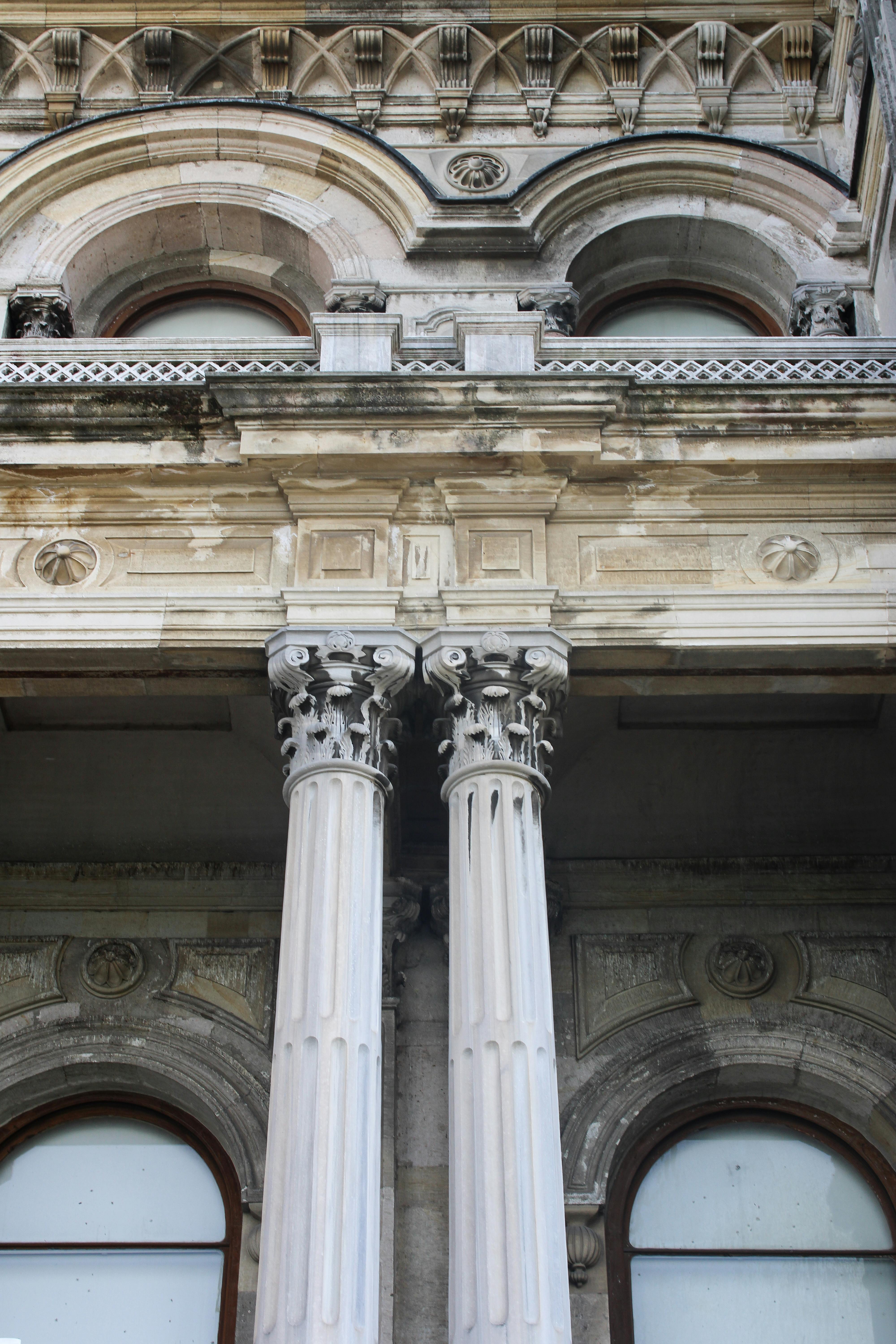
The Char Dham Yatra
Overview of the char dham yatra.
The Char Dham Yatra is a holy pilgrimage in India that involves visiting four sacred sites – Yamunotri, Gangotri, Kedarnath, and Badrinath. These sites are located in the majestic Himalayan region of Uttarakhand and hold immense religious significance for Hindus.
Importance of the four pilgrimage sites
Each of the four pilgrimage sites has its own unique significance:
Yamunotri: Located at the source of the river Yamuna, Yamunotri is dedicated to the goddess Yamuna. Devotees undertake a trek to the temple to take a dip in the holy waters and seek blessings.
Gangotri: Situated on the banks of the river Bhagirathi, Gangotri is the birthplace of the river Ganges. Pilgrims visit the Gangotri temple to offer prayers and witness the origin of the sacred river.
Kedarnath: Nestled in the snow-clad peaks, Kedarnath is dedicated to Lord Shiva. It is believed to be one of the twelve Jyotirlingas (lingams of light) and holds immense religious significance for Hindus.
Badrinath: Devotees visiting Badrinath pay homage to Lord Vishnu, who is believed to reside in the temple for six months of the year. The temple is situated amidst the awe-inspiring beauty of the Garhwal Himalayas.
Challenges and logistics of undertaking the yatra
Undertaking the Char Dham Yatra poses several challenges due to its remote location and harsh terrain. Pilgrims need to prepare themselves physically and mentally for the arduous journeys, which often involve treks through mountainous paths. Adequate transportation, accommodation, and medical facilities are essential to ensure the safety and comfort of pilgrims. The Uttarakhand government, along with various organizations and tour operators, strive to improve infrastructure and facilitate a smooth yatra experience.
Ancient Temples and Monasteries
Historical importance of ancient temples and monasteries.
Ancient temples and monasteries hold great historical and cultural importance in India. They are not only sacred places of worship but also treasure troves of architectural brilliance and historical narratives. These structures have withstood the test of time, preserving the essence of ancient civilizations and showcasing the artistic and engineering genius of bygone eras.
Prominent examples of ancient religious structures
India is home to several prominent ancient religious structures that mesmerize visitors with their grandeur and historical significance. Some of these include:
Khajuraho Temples: Located in Madhya Pradesh, the Khajuraho Temples are renowned for their exquisite stone carvings, depicting various scenes from mythology and everyday life. The temples are a UNESCO World Heritage Site and exemplify the artistic and architectural brilliance of the Chandela dynasty.
Konark Sun Temple: Situated in Odisha, the Konark Sun Temple is a remarkable example of Kalinga architecture. Dedicated to the Sun God, this temple was built in the shape of a colossal chariot with intricately carved stone wheels and sculptures.
Ajanta and Ellora Caves: Located in Maharashtra, the Ajanta and Ellora Caves are a UNESCO World Heritage Site and showcase ancient rock-cut Buddhist, Jain, and Hindu temples. The caves feature beautiful frescoes, intricate sculptures, and artistic depictions of the respective faiths.
Preservation efforts and restoration projects
Efforts are being made to preserve and restore these ancient religious structures to ensure their longevity and cultural significance are not lost. Government bodies, religious organizations, and cultural institutions collaborate to carry out conservation projects, including structural repairs, documentation, and research. These initiatives aim to safeguard the architectural gems of ancient India and allow future generations to marvel at their beauty and historical value.
Tirthas and Sacred Water Bodies
The significance of tirthas and sacred water bodies.
Tirthas, often referred to as pilgrimage sites in India, hold immense religious and spiritual significance. These sites are believed to be infused with divine energy and offer a spiritual cleansing and purifying experience to devotees. Sacred water bodies, such as rivers, lakes, and ponds, are often interconnected with these tirthas and are considered holy in various religious traditions.
Famous tirthas and sacred water bodies in India
India is blessed with numerous tirthas and sacred water bodies that attract pilgrims from diverse religious backgrounds. Some of the famous ones include:
Allahabad Sangam: Located at the confluence of the Ganges, Yamuna, and mythical Saraswati rivers, Allahabad Sangam is considered one of the holiest tirthas in Hinduism. Taking a dip at the Sangam during religious festivals like Kumbh Mela is believed to cleanse one’s sins.
Pushkar Lake: Situated in the desert state of Rajasthan, Pushkar Lake is considered one of the five most sacred pilgrimage sites for Hindus. It is believed to be the place where Lord Brahma performed a yajna (fire ritual) and is known for the annual Pushkar Camel Fair.
Hemkund Sahib: Located in the state of Uttarakhand, Hemkund Sahib is a high-altitude Sikh pilgrimage site. The pristine Hemkund Lake, surrounded by snow-clad mountains, is believed to be a place of meditation for Guru Gobind Singh, the tenth Sikh Guru.
Rituals and practices associated with these sites
Devotees visiting tirthas and sacred water bodies engage in various rituals and practices as part of their religious journey. Taking a holy bath, performing prayers, offering flowers and lamps, and circumambulating sacred sites are common practices. Many pilgrims also observe fasts and engage in acts of charity and selfless service as a form of devotion.
Yoga and Meditation Retreats
Emergence of yoga and meditation retreats in religious tourism.
In recent years, yoga and meditation retreats have gained significant popularity among travelers seeking a blend of spirituality and wellness. These retreats provide a sanctuary for individuals looking to rejuvenate their mind, body, and soul while exploring the depths of their spirituality. The teachings of yoga and meditation are deeply rooted in ancient Indian traditions and offer a holistic approach to well-being.
Prominent yoga and meditation centers in India
India is considered the birthplace and spiritual hub of yoga and meditation, making it an ideal destination for those interested in these practices. Several prominent centers offer transformative retreat experiences, including:
Parmarth Niketan Ashram, Rishikesh: Situated on the banks of the Ganges, this ashram offers a serene environment for yoga and meditation practitioners. Daily activities include yoga classes, meditation sessions, spiritual discourses, and participation in the Ganga Aarti ritual.
Art of Living International Center, Bengaluru: Founded by Sri Sri Ravi Shankar, this center offers a variety of courses and retreats focused on yoga, meditation, and holistic well-being. The tranquil setting and expert guidance enhance the transformative experience for participants.
Vipassana Meditation Centers: Spread across various locations in India, Vipassana centers provide intensive meditation courses based on the teachings of Gautama Buddha. These silent retreats offer participants an opportunity to practice self-awareness and mindfulness.
Integration of spirituality and wellness in retreats
Yoga and meditation retreats in India often combine spirituality with wellness practices, creating a holistic experience. Participants not only delve into deep meditation and yoga practices but also benefit from nutritious vegetarian meals, natural therapies, Ayurvedic treatments, and mindfulness exercises. These retreats offer a balanced approach to self-care, nurturing the body, mind, and spirit.
Religious Tourism and Sustainable Development
Positive impact of religious tourism on local economies.
Religious tourism has a significant positive impact on local economies, particularly in the regions surrounding religious sites. The influx of pilgrims and tourists generates income for local businesses, including hotels, restaurants, transportation services, and handicraft vendors. This economic boost contributes to job creation and upliftment of the local community.
Challenges and strategies for sustainable religious tourism
Sustainable religious tourism faces several challenges, including overcrowding, environmental degradation, and cultural commodification. To mitigate these challenges, sustainable practices need to be adopted, such as:
- Limiting the number of visitors to sensitive sites to preserve their sanctity and minimize impact.
- Implementing waste management systems to minimize pollution and littering.
- Promoting responsible tourism practices, including educating visitors about cultural norms, environmental conservation, and respect for spiritual spaces.
- Collaborating with local communities to involve them in decision-making processes and ensuring fair economic benefits through community-based tourism initiatives.
Community involvement and responsible practices
Community involvement plays a crucial role in ensuring the long-term sustainability of religious tourism. Engaging local communities in the planning, management, and promotion of tourism activities fosters a sense of ownership and pride. It also allows for the preservation of cultural traditions, encourages the transmission of knowledge and skills, and leads to the equitable distribution of economic benefits.
Religious tourism in India offers a fascinating journey through the country’s spiritual and cultural heritage. From ancient temples and monasteries to sacred water bodies and yoga retreats, India presents a diverse and immersive experience for pilgrims and spiritual seekers. The significance of religious festivals, the charm of pilgrimage sites, and the depth of ancient traditions make India an exceptional destination for those seeking enlightenment, self-discovery, and a deeper connection with the divine. Embark on this divine journey and explore the vast religious tapestry that India has to offer.
Indian Culture Team

Religious tourism- what is it and how does it work?
Disclaimer: Some posts on Tourism Teacher may contain affiliate links. If you appreciate this content, you can show your support by making a purchase through these links or by buying me a coffee . Thank you for your support!
Religious tourism makes up a big part of the tourism industry worldwide. Learn more about religious tourism, what it is and how it works in this article….
What is religious tourism?
Why is religious tourism important, missionaries, religious sightseeing, religious tourism in india, religious tourism in the philippines, religious tourism in italy, religious tourism in israel, religious tourism in turkey, religious tourism in poland, religious tourism- further reading.

Religious tourism is a branch of tourism which involves people travelling for religious purposes (like a pilgrimage ) or to see things of religious importance (sightseeing). It is also known as faith tourism. It also incorporates missionaries. Religious tourism isn’t just for religious people, of course. Many people who engage in religious tourism are actually of no religion themselves!
Religious tourism is an important branch of tourism for many reasons. It allows people to connect to their religion in a way they might otherwise not be able to – for example, a Muslim person living in a predominantly Christian country or area may have little opportunity to visit a mosque. They may also not have the chance to meet other Muslims very often. By visiting a place where Islam is the prominent religion, they might be able to build a better connection with their religion.
It also provides a way for humanity to preserve our common heritage. All religions are practised in different places across the globe, as humanity has spread through the centuries. By visiting religious monuments and locations, we are able to learn more about the histories behind different religions, making religious tourism a great form of educational tourism too.
Religious tourism also helps to provide funding for the upkeep and preservation of religious sites. Entry fees to places like the Vatican are useful when it comes to repairs and paying for the staff who maintain the physical aspect of the Catholic Church. As well as this, as more people visit certain areas, governments are forced to ensure that roads, water supplies and infrastructure are taken care of.
Religious tourism activities
There are various activities which can come under the arm of religious tourism. One major one is a pilgrimage. I have an in-depth article about this, which you can read here . A pilgrimage is an often lengthy trip to a place of particular significance to your religion. An example of this is Muslims visiting Mecca, or Catholics heading to Lourdes. You can find some other religious tourism activities below…

A missionary is a person sent on a mission by their religion. They are sent to an area in order to promote this religion, and also provide services that this area may need. The most famous missionaries are members of the evangelical church, a branch of Christianity. The term comes from the Bible, when Jesus himself used it to refer to sending his disciples to preach the gospel in his name. However, the term’ missionary’ can be used in relation to any religion.
The most popular form of religious tourism is sightseeing. This is something which many people do, regardless of their particular religion. Every year, over 5 million people visit the Vatican – and they are not all Catholics heading there to pray or connect to the religion. They are also people who are interested in art and architecture, or history buffs, or people who want to tick ‘visiting the world’s smallest country’ off their bucket list.
The same goes with people visiting other religious sites. They may not necessarily be religious themselves. Many are, of course, and visit these sites for reasons similar to why people go on pilgrimages. They want to connect with other people of the same religion, or visit a place that is important to the religion itself.
There are many places you can go if religious sightseeing is something you enjoy. You’ll find some popular ones below!
Religious tourism destinations
Pretty much every town and city across the globe has a church, mosque, temple, cathedral or synagogue (and so on) – which means religious tourism can take place anywhere. There are some places, however, where it is much more prominent than others.

Religious tourism in India is huge. Spirituality is a massive part of Indian culture , with the main religion being Hinduism. 79.8% of the population identify as Hindu, with 14.2% practising Islam and 2.3% being Christians. Sikhism and Buddhism, while not as popular in India now, were both actually founded here.
With that in mind, there are many places of religious importance to visit in India.
Haridwar and Varanasi are two famous religious places in India, and have been since ancient times. They are two sites with a lot of significance in Hinduism. Haridwar is where the River Ganges exits the Himalayan foothills, and there is a nightly river worshipping ceremony held here. Tiny flickering lamps are floated off the steps of the sacred ghat here. Varanasi is believed to have been the home of Lord Shiva, a prominent figure in Hinduism. Varanasi sees many pilgrims visiting in order to purify themselves by bathing in the River Ganges at sunrise.
There are also hundreds of beautiful churches, temples and mosques across the country which make for wonderful sightseeing.

The Philippines is a predominantly Catholic country. 83% of residents are Roman Catholic, with other branches of Christianity being the next popular religion followed by Islam. There are many Catholic sites you can visit as a religious tourist. These include:
- Monasterio de Tarlac, San Jose, Tarlac – with its statue very reminiscent of Christ the Redeemer in Rio
- National Shrine of the Divine Mercy, Marilao, Bulacan – with healing flower water in its basement
- Tatlong Krus, Paete, Laguna – the site of three tall white crosses with breathtaking views, a popular pilgrimage site
- Our Lady of Lourdes Grotto, San Jose Del Monte City, Bulacan – a replica of the grotto at Lourdes, with 14 Stations of the Cross
- Manila Cathedral – inside the walled historic city of within the modern city of Manila

When it comes to religious tourism, Italy is one of the best places. You’ll find so many churches, cathedrals, museums and historic religious sites to visit whether you are religious or not. Being the location of the Vatican, which is the heart of the Catholic Church, it comes as no surprise! Statistics show that Italy is home to at least 1,500 shrines, 30,000 churches, and 700 diocesan museums. As well as this, there are a large number of monasteries and convents across the country.
Assisi is one of the most important places in Italy for religious tourism. This is where St Francis (patron saint of Italy) lived! His remains are buried at the basilica here.
Loreto is another important destination. People come here to visit the Basilica della Santa Casa, home to some of the relics of the holy house of Nazareth. Legend says this is the house where Mary would have grown up – and where she would have received the message of Jesus’ birth.
Rome , of course, is where you can go to visit the Vatican. St Peter’s Square is an incredibly important destination for religious tourism, as people flock here to catch a glimpse of – or be blessed by – the Pope.

More than half of tourists visiting Israel are religious tourists. Home of the Holy Land, it is no wonder that so many Christians and Jews come here. Recent statistics show that:
- 90% of all Christian tourists visited Jerusalem
- 89% visited Tiberias and the Sea of Galilee
- 86% visited Nazareth
- 85% visited the Dead Sea area
- 83% visited Capernaum
- 86% of pilgrims visited Bethlehem
Within these regions, there are so many places to see which are of religious importance to Christians and the people of the Jewish faith. These include Via Dolorosa, the Western Wall, Mount of Olives, the Church of the Nativity, the Church of the Annunciation and many more.

There is a lot of religious tourism in Turkey too. Here there are many churches, mosques, mausoleums, crypts and so on. Religious tourists can visit the ‘first church in the world’, which is the Church of Saint Peter. Located near Antakya, it is a cave carved into the mountainside. Saint Nicholas lived in Turkey, too, so there are various locations linked to him – including the alleged site of his burial in Demre.
It’s not just Christianity that is so present in Turkey. There are so many Islamic sites of importance across the country too. Istanbul is home to the only remaining items of clothing of the prophet Muhammad; there are beautiful mosques in every area of the country, and you’ll be able to hear the call to prayer wherever you are.

Poland is another destination which is popular for religious tourism. One very popular site is the Pauline Monastery on Jasna Góra in Częstochowa. This is where tourists can find the blessed icon of the Black Madonna, worshipped globally. Wadowice is the birthplace of Pope John Paul II – and there is a lot of information about him in Krakow too, as the two places are relatively close. Generally, the country has many beautiful churches and monasteries. These make for brilliant sightseeing trips, a major part of religious tourism as stated above.
If you have enjoyed this article, I am sure that you will love these too!
- What is pilgrimage tourism and why is it important?
- Social impacts of tourism
- What is sustainable tourism and why does it matter?
- Volunteer tourism: Everything you need to know
- Ethical tourism: Everything you need to know
Liked this article? Click to share!
We have updated our terms and conditions and privacy policy Click "Continue" to accept and continue with ET HospitalityWorld
We use cookies to ensure best experience for you
We use cookies and other tracking technologies to improve your browsing experience on our site, show personalize content and targeted ads, analyze site traffic, and understand where our audience is coming from. You can also read our privacy policy , We use cookies to ensure the best experience for you on our website.
By choosing I accept, or by continuing being on the website, you consent to our use of Cookies and Terms & Conditions .
- Leaders Speak
- Brand Solutions
- Speaking Heads
- India can lead in spiritual tourism
Spiritual travel is driving India's travel recovery. It is more inflation proof than other forms of travel, is not impacted by adversities to that extent as regular travel.
- Charulata Sukhija ,
- ETHospitalityWorld
- Published On Jun 9, 2023 at 01:00 PM IST
- By Charulata Sukhija ,
- Updated On Jun 9, 2023 at 01:00 PM IST
All Comments
By commenting, you agree to the Prohibited Content Policy
Find this Comment Offensive?
- Foul Language
- Inciting hatred against a certain community
- Out of Context / Spam
Join the community of 2M+ industry professionals
Subscribe to our newsletter to get latest insights & analysis., download ethospitalityworld app.
- Get Realtime updates
- Save your favourite articles
- vivekananda
- richard gere
- nizzamudin chisti
- mark zuckerberg
- bangla sahib

Decoding India’s religious tourism rush, in charts

The consecration ceremony of the Ram temple on Monday has put the ancient city of Ayodhya in the spotlight as the next big religious tourism hotspot. Being home to diverse cultures and religions, India has always been big on religious tourism. Think about the popular temple ghats in Varanasi to the tomb of Khawaja Moinuddin Chishti at Ajmer Sharif and the Golden temple in Punjab.
Religious tourism is estimated to be the biggest segment within India’s tourism umbrella, and according to SOTC Travel, a tourism firm, has clocked a near 40% on-year growth last year. Sensing growth potential, the government has also launched initiatives to improve last-mile infrastructure at prominent pilgrimage and heritage destinations.
Religious India
Most Indians believe in God’s existence, shows a 2021 survey by US-based Pew Research Center. It’s common to devote time and energy to religious practices. Urban Indians are more religious: the ones who engage in religious practices spend about 67 minutes a day on them, compared to 61 minutes in rural India, shows data from the government’s Time Use Survey. The Tirupati temple, one of the few sites to release regular data on footfalls, has already had over 1.3 million visitors since the start of this year.

Flying to pray
While data for actual footfalls is not easily available, the tourism boom is likely evident from passenger counts at relatively smaller airports that largely cater to pilgrimage spots. Footfalls at airports in Shirdi, Gaya, Aurangabad, Amritsar and other places with religious interests have sharply risen in the past five years, faster than the pan-India air passenger growth. The interest and demand around religious tourism could also be seen from the recent runaway rise in air fares to Ayodhya ahead of the consecration.

Right in its first year in power, the Narendra Modi government launched the Pilgrimage Rejuvenation and Spiritual Augmentation Drive (PRASAD) to develop tourism around selected religious sites through financial aid to states. A total of 73 destinations—some little-known, and nearly a third of them in the north-east—have been identified, and funds of ₹ 1,629 crore have been sanctioned for 46 projects.
Eighteen of the approved projects alone are expected to generate 2.5 million jobs, the government estimates. The scheme was renamed PRASHAD after being merged with a similar scheme for heritage sites in 2017 (the ‘H’ stands for ‘heritage’).

Ripe for business
The rising religious fervour could spell an opportunity for businesses to tap into newer markets. Sectors that could benefit from a rise in religious tourism include hospitality, fast-moving consumer goods, quick-service restaurant chains and infrastructure-related ones. How will India’s tourism boom shape up? Only God (and the myriad devotees) can tell!
- #plain-facts
MINT SPECIALS
Wait for it….
Log in to our website to save your bookmarks. It'll just take a moment.
You are just one step away from creating your watchlist!
Oops! Looks like you have exceeded the limit to bookmark the image. Remove some to bookmark this image.
Your session has expired, please login again.
Congratulations!
You are now subscribed to our newsletters. In case you can’t find any email from our side, please check the spam folder.

Subscribe to continue
This is a subscriber only feature Subscribe Now to get daily updates on WhatsApp
A geospatial approach to enhance religious tourism in India—A case of Ujjain city, Madhya Pradesh
- Published: 18 November 2020
- Volume 87 , pages 1793–1810, ( 2022 )
Cite this article
- Kakoli Saha ORCID: orcid.org/0000-0003-0686-6502 1 ,
- Rajrani Kalra 2 &
- Rachna Khare 3
596 Accesses
3 Citations
Explore all metrics
Religious tourism has been in practice for centuries in India. There are several religious tourist spots spread across India that belong to different religions, including Hinduism, Buddhism, Jainism, Sikhism, and Islam. Ujjain city is located in the Indian state of Madhya Pradesh, and has been selected as a case study for this paper because of its 5000 year long history. Considering the importance of the city from the aspect of religious tourism, this paper aims to address the issue of improving the universal accessibility status of Ujjain city in the context of the mobility of a religious tourist with disability. This research addresses an overarching research question: Can GIS technology enhance religious tourism for the visitor with disability in Ujjain city? In this research, an accessibility assessment was performed using universal access audit checklist. Accessibility and related approaches such as “Inclusive Design” or “Design for All,” aims to produce systems that can be used by everyone, regardless of their physical or cognitive skills. The entire road network of Ujjain city was digitized in GIS platform. Major road stretches were selected and an accessibility audit was performed using a purpose made checklist suitable in the Indian context. The Multiple Criteria Evaluation technique in GIS environment is utilized, with a map showing hierarchy of accessible zones prepared for Ujjain city. The map would help the local authority to make Ujjain city more accessible for differently abled and aged visitors. Improvement in tourism would result in high revenue generation ultimately benefitting the city residents. Moreover, the proposed technique may be adopted by other such cities endowed with religious destinations as India is a land of several religions.
This is a preview of subscription content, log in via an institution to check access.
Access this article
Price includes VAT (Russian Federation)
Instant access to the full article PDF.
Rent this article via DeepDyve
Institutional subscriptions
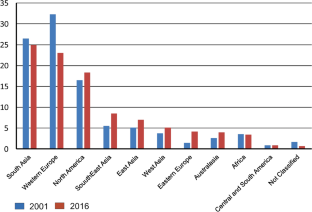
Source Government of India, Ministry of Tourism (2013 and 2017)
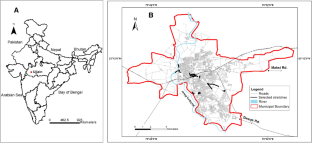
Similar content being viewed by others

Impact of tourism development upon environmental sustainability: a suggested framework for sustainable ecotourism
Qadar Bakhsh Baloch, Syed Naseeb Shah, … Asia Umar Khan

Assessing the role of urban green spaces for human well-being: a systematic review
Muhammad Jabbar, Mariney Mohd Yusoff & Aziz Shafie

The Impact of Road Infrastructure Development Projects on Local Communities in Peri-Urban Areas: the Case of Kisumu, Kenya and Accra, Ghana
Risper Sarah Khanani, Emmanuel Junior Adugbila, … Karin Pfeffer
References:
Access-improving the accessibility of historic buildings and places. (2011). Ireland: National Disability Authority.
Alipour, H., Olya, H. G., & Forouzan, I. (2017). Environmental impacts of mass religious tourism: From residents’ perspectives. Tourism Analysis, 22 (2), 167–183.
Article Google Scholar
Alzouby, A. M., Nusair, A. A., & Taha, L. M. (2019). GIS based multi criteria decision analysis for analyzing accessibility of the disabled in the Greater Irbid Municipality Area, Irbid, Jordan. Alexandria Engineering Journal, 58 (2), 689–698.
ArcGIS Desktop Help (V. 10.6). Environmental systems research institute (ESRI), Retrieved October 21, 2021, from https://desktop.arcgis.com/en/arcmap/10.6/tools/3d-analyst-toolbox/idw.htm .
Azari, K. A., Arintono, S., Hamid, H., & Davoodi, S. R. (2013). Evaluation of demand for different trip purposes under various congestion pricing scenarios. Journal of Transport Geography . 29, 43–51.
Bergner, B. S., Zeile, P., Papastefanou, G., Rech, W., & Streich, B. (2011). Emotional barrier-GIS–a new approach to integrate barrier-free planning in urban planning processes . In proceedings of REAL CORP 2011, Germany, 247–257.
Bickenbach, J. E. (2012). Ethics, law and policy . California: Sage.
Book Google Scholar
Burrough, P. A. (1986). Principles of geographical information systems for land resources assessment . Oxford: Clarendon Press.
Census of India. (2011). Data on religion. Registrar general and census commissioner of India, Ministry of home affairs, New Delhi, India. Retrieved July 18, 2020, from https://censusindia.gov.in/2011 .
Church, R. L., & Marston, J. R. (2003). Measuring accessibility for people with a disability. Geographical Analysis, 35 (1), 83–96.
Code of Practice-on Accessibility of Public Services and Information. (2006). Ireland: Public Bodies–National Disability Authority.
Costa, P., Fernandes, H., Vasconcelos, V., Coelho, P., Barroso, J., & Hadjileontiadis, L. (2011). Fiducials marks detection to assist visually impaired people navigation. International Journal of Digital Content Technology and its Applications, 5 (5), 342–350.
Dunn, C. E. (2007). Participatory GIS-a people’s GIS? Papers in Human Geography, Progress in Human Geography, 31 (5), 616–637.
Elwood, S. (2014). Participatory approaches in GIS and society research: Foundations, practices and future research. In T. L. Nyerges, H. Couclelis, & R. McMaster (Eds.), The sage handbook of gis and society . Los Angeles: Sage Publishers.
Google Scholar
Engel, G. L. (1977). The need for a new medical model: A challenge for biomedicine. Science, 196 (4286), 129–136.
Fernández, V. C. (2007). The use of gis to study transport for disabled people. Documentos de Trabajo FUNCAS, 335, 1.
Golledge, R. G., Klatzky, R. L., Loomis, J. M., Speigle, J. M., & Tietz, J. (1998). A geographical information system for a GPS based personal guidance system. International Journal of Geographical Information Science, 12 (7), 727–749.
Goswami, P. (1981). Calendar of Katha Recitals . Retrieved June 10, 2008 from https://www.vaijayanti.com .
Griffin, K., & Raj, R. (2017). The importance of religious tourism and pilgrimage: Reflecting on definitions Motives and Data. International Journal of Religious Tourism and Pilgrimage, 5 (3), 2–9.
Griffiths, M., & Wiltshier, P. (2019). Managing religious tourism . Oxfordshire: CABI.
Gupta, V. (1999). Sustainable tourism: Learning from Indian religious traditions. International Journal of Contemporary Hospitality Management, 11 (2/3), 91–95.
Helal, A., Moore, S. E., & Ramachandran, B. (2001). Drishti: An integrated navigation system for visually impaired and disabled. In proceedings of fifth international symposium on wearable computers . IEEE. pp. 149–156.
Heywood, I., Cornelius, S., & Carver, S. (2006). An introduction to geographical information systems . Boston: Person Prentice Hall.
Imrie, R. (2004). Demystifying disability: A review of the international classification of functioning and health. Sociology of Health and Illness, 26 (3), 287–305.
Israeli, A. A. (2002). A preliminary investigation of the importance of site accessibility factors of disabled tourists. Journal of Travel Research, 41 (1), 101–104.
Jacobson, R. D., & Kitchin, R. M. (1997). GIS and people with visual impairments or blindness: Exploring the potential for education, orientation, and navigation. Transactions in GIS, 2 (4), 315–332.
Kalra, R. R. (2020). Studies in tourism geography of India: Definition, approaches and prospects. In R. Thakur, A. K. Dutt, G. Pomeroy, & S. K. Thakur (Eds.), Urban and regional planning and development: 20th Century forms and 21st century transformations (pp. 431–452). New York: Springer.
Chapter Google Scholar
Kammoun, S., Macé, M. J. M., Oriola, B., & Jouffrais, C. (2012). Towards a geographic information system facilitating navigation of visually impaired users. In international conference on computers for handicapped persons (pp. 521-528). Berlin: Springer.
Kaur, J. (1985). Himalayan pilgrimages and the new tourism . New Dehli: Himalayan Books.
Khare, R., & Khare, A. (2014). Uniting differences—Universal design for exploring the world heritage sites in India . Bhopal: SPA Press.
Lid, I. M., & Solvang, P. K. (2016). (Dis) ability and the experience of accessibility in the urban environment. Alter, 10 (2), 181–194.
Lusher, R., & Mace, R. (1989). Design for physical and mental disabilities. In Wilkes and Packard, (Ed.), Encyclopedia of architecture: Design engineering and construction (p. 755). New York: Wiley.
Malczewski, J. (1999). GIS and multi-criteria decision analysis . New York: Wiley.
Malczewski, J. (2006). GIS-based multicriteria decision analysis: A survey of the literature. International Journal of Geographical Information Science, 20 (7), 703–726.
Manual on Accessible Tourism for All–Public-Private Partnerships and Good Practices. (2015). World tourism organization and fundación ACS, UNWTO, Madrid.
Mayordomo-Martínez, D., Sánchez-Aarnoutse, J.-C., Carrillo-de-Gea, J. M., García-Berná, J. A., Fernández-Alemán, J. L., & García-Mateos, G. (2019). Design and development of a mobile app for accessible beach tourism information for people with disabilities. International journal of environmental research and public health, 16 (12), 2131.
McMillen, R. (2015). Museum disability access: Social inclusion opportunities through innovative new media practices. Pacific Journal, 10, 95–107.
Harmonised Guidelines and Space Standards for Barrier Free Built Environment for Person with Disability and Elderly Person (February, 2016). India: Ministry of Urban Development.
Moss, M. P., Schell, M. C., & Goins, R. T. (2006). Using GIS in a first national mapping of functional disability among older American Indians and Alaska natives from the 2000 census. International journal of health geographics, 5 (1), 1–11.
Parker, G., & Doak, J. (2012). Key concepts in planning . London: Sage.
Raiees-Dana, D. J. (2012). Navigation and accessibility for persons with disabilities: An anthropological study using GIS On The University of Arkansas Campus (Masters Thesis). Arkansas, USA: University of Arkansas.
Rani, B. (2018). The rights of persons with disabilities act, 2016 promoting inclusive education. International Journal of Advanced Research and Development, 3 (2), 798–800.
Rinschede, G. (1992). Forms of religious tourism. Annals of tourism Research, 19 (1), 51–67.
Sharpley, R., & Sundaram, P. (2005). Tourism: A sacred journey? The case of ashram tourism, India. International journal of tourism research, 7 (3), 161–171.
Shinde, K. A. (2010). Entrepreneurship and indigenous enterpreneurs in religious tourism in India. International Journal of Tourism Research, 12 (5), 523–535.
Shinde, K. A. (2017). Planning for urbanization in religious tourism destinations: Insights from Shirdi, India. Planning Practice and Research, 32 (2), 132–151.
Shinde, K. (2018). "Governance and management of religious tourism in India. International Journal of Religious Tourism and Pilgrimage, 6 (1), 58–71.
The Rights of Persons with Disabilities Act. (2016). The Gazette of India, New Delhi: The Ministry of Law Justice, Government of India.
Ujjain Development Plan for 2021. India: Ministry of Urban Development, Government of India.
Ujjain Smart City Proposal. (2016). India: Ministry of urban development, Government of India.
Verma, M., & Sarangi, P. (2019). Modeling attributes of religious tourism: A study of Kumbh Mela, Allahabad. Journal of Convention and Event Tourism, 20 (4), 296–324.
Yairi, I. E., & Igi, S. (2006). Mobility support GIS with universal-designed data of barrier/barrier-free terrains and facilities for all pedestrians including the elderly and the disabled. In 2006 IEEE international conference on systems, man and cybernetics (Vol. 4, pp. 2909–2914). IEEE.
Yasuda, S. (2018). 3 Entrepreneurship for religious tourism in Mumbai, India. Religious Tourism in Asia: Tradition and Change through Case Studies and Narratives , 21.
Download references
Acknowledgements
The authors would like to thank and acknowledge Mr. Sauvik Adhikari, Mr. Udit Sarkar and all the students of Masters of Urban and Regional Planning Studio, SPA Bhopal for conducting the survey. The authors are thankful to Ministry of Human Resource Development for funding part of the the research through Design Innovation Centre (DIC) project titled “Universal Design Innovation for Heritage.” The authors would also like to thank the editor and anonymous reviewers for reviewing an ealier version of this paper and for providing valuable suggestions. Authors are also grateful to Ar. Gaurab Das Mahapatra for providing reference material.
The research is funded by the Ministry of Human Resource Development, Govt. of India through Design Innovation Centre (DIC) project titled “Universal Design Innovation for Heritage.”
Author information
Authors and affiliations.
Department of Planning, School of Planning and Architecture, Bhopal, India
Kakoli Saha
Department of Geography and Environmental Studies, California State University, San Bernadino, CA, USA
Rajrani Kalra
Department of Architecture, School of Planning and Architecture, Bhopal, India
Rachna Khare
You can also search for this author in PubMed Google Scholar
Corresponding author
Correspondence to Kakoli Saha .
Ethics declarations
Conflict of interest.
The authors declare that they have no conflict of interest among the authors of this manuscript.
Informed consent
The research does not involve any human or animal participants.
Additional information
Publisher's note.
Springer Nature remains neutral with regard to jurisdictional claims in published maps and institutional affiliations.
Rights and permissions
Reprints and permissions
About this article
Saha, K., Kalra, R. & Khare, R. A geospatial approach to enhance religious tourism in India—A case of Ujjain city, Madhya Pradesh. GeoJournal 87 , 1793–1810 (2022). https://doi.org/10.1007/s10708-020-10334-w
Download citation
Accepted : 03 November 2020
Published : 18 November 2020
Issue Date : June 2022
DOI : https://doi.org/10.1007/s10708-020-10334-w
Share this article
Anyone you share the following link with will be able to read this content:
Sorry, a shareable link is not currently available for this article.
Provided by the Springer Nature SharedIt content-sharing initiative
- Religious tourism
- Universal accessibility
- Find a journal
- Publish with us
- Track your research
WEEKEND OFFER: Subscribe For Just ₹̶2̶9̶9̶9̶ ₹699
The Religious Tourism Boom
Ankit Saxena
Jul 25, 2023, 12:20 PM | Updated 01:05 PM IST
Save & read from anywhere!
Bookmark stories for easy access on any device or the Swarajya app .
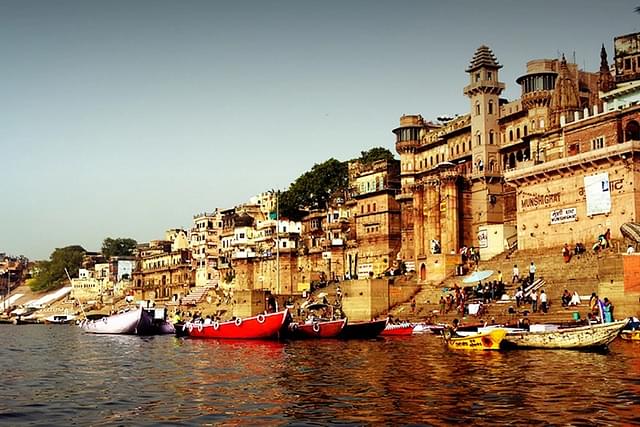
- Pilgrim paths are attracting more travellers than Goa beaches.
More than 60 per cent of tourism in India is associated with religious and spiritual tourism.
In recent years, travel in India has witnessed a significant transformation, with pilgrimage tourism emerging as a popular trend.
Holy sites across the country are now attracting devotees in unprecedented numbers. The surge is coming from both: devotees from all parts of India as well as devotees from across the globe.
Recently unveiled data for the year 2022 depicts a surge in religious tourism across major destinations in India.
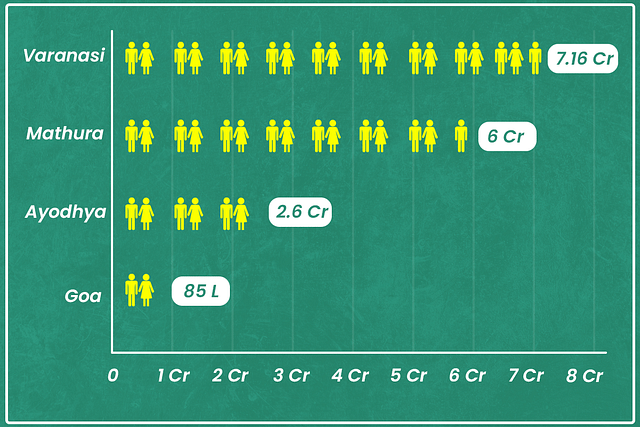
The graph above shows that pilgrim paths are attracting more travellers than Goa's beaches, which is generally regarded as the top choice for recreational travel for many tourists.
The popularity of pilgrim travel among all sections of the population is not unexpected. Some of the events associated with some temples even rank among the largest religious gatherings in the world.
The number of domestic tourists that visited places of pilgrimage was 1,433 million in 2022, while 6.64 million foreign tourists visited India. In 2021, the numbers stood at 677 million and 1.05 million, respectively.
Some of the other sites that receive thousands of daily worshippers include the Vaishno Devi shrine in Jammu, the Golden Temple in Amritsar, Tirumala’s Balaji temple in Andhra Pradesh.
The surging popularity of religious and spiritual sites as tourist destinations can be attributed to the significant improvements and thoughtful planning invested in recent years.
These sacred places have been curated to provide new and enriching features, elevating the overall experience for visitors. Additionally, the increased religious sentiments play a crucial role in attracting people from diverse backgrounds.
On the other hand, destinations like Goa, while still offering attractive amenities, have maintained a more consistent appeal over time.
Recognising The Significance Of Religious Sites In India
The focused efforts and development plans for these sacred sites have not only led to their growth but also fostered a widespread awareness of their religious and cultural significance.
The anticipation of proposed and further transformations has also kindled the interest of travellers from both domestic and international regions.
Recognising the substantial economic and cultural advantages that spiritual tourism can bestow upon the nation, Prime Minister Narendra Modi introduced initiatives like PRASAD (Pilgrimage Rejuvenation and Spiritual Augmentation Drive) in 2015.
These schemes have been aimed at enhancing and revitalising pilgrimage destinations, acknowledging their importance in attracting visitors and boosting the overall tourism industry.
Last year, the number of visitors to Kashi Vishwanath Dham in Varanasi soared to around seven crore after its renovation, a substantial increase from the approximately eighty lakh visitors the previous year.
The Sri Kashi Vishwanath Dham project was conceived with the vision of creating a convenient pathway to connect Sri Kashi Vishwanath Temple to the sacred banks of the River Ganga.
On 8 March 2019, the foundation stone of the project was laid by the Prime Minister.
Earlirt, the main temple, Kashi Vishwanath temple, located on the left bank of the river Ganga, was surrounded by narrow and cramped lanes.
Despite being a significant place of worship in the city, and the country, it struggled to accommodate the enormous crowds, which poured in throughout the year, especially during festive times.
On a typical day, around 3,000 to 5,000 people visited the temple, while on special occasions like Mahashivratri and Shravana masa , the numbers could surpass one to three lakh.
The project's goal was to make the temple easily accessible to even the elderly and disabled, with the implementation of ramps, escalators, and other modern facilities.
Phase-1 of the project includes the inauguration of 23 buildings, intended to offer various amenities to the pilgrims visiting Sri Kashi Vishwanath Temple.
These facilities include Yatri Suvidha Kendra , Tourist Facilitation Centre, Vedic Kendra, Mumukshu Bhavan, Bhogshala , City Museum, Viewing Gallery, and Food Court, among others.
While the development of Kashi corridor has opened up doors to increasing visitors, it is worth noting that Mathura and Ayodhya, are still in process or early stages of development as per the aspirations for these sites.
Despite this, they are already witnessing a significant rise in tourist numbers each passing year.
Vrindavan and Ayodhya — Prominent Holy Destinations
For Vrindavan, Mathura, the vastly improved connectivity with surrounding regions has made it easily accessible to a broader audience.
The construction of the six-lane wide Yamuna Expressway has played a significant role in this transformation, providing a convenient route for an increased number of devotees, from Delhi NCR, to travel and visit the holy site for a day.
Similarly, the Agra Lucknow expressway and the emerging network of expressways across Uttar Pradesh state have further enhanced accessibility to Vrindavan.
With a focus to transform Ayodhya into a model temple town before the Shri Ram Janmabhoomi Temple opens its doors to devotees in 2024, the government has been focused on wide-scale development for the town — envisioned to become a prominent destination on the global religious map.
The current numbers of pilgrims are expected to increase on massive scale and for the same, the UP government, and the Ayodhya Development Authority (ADA) has been spearheading infrastructure and planning advancements in the city in order to cater to the anticipated surge and new opportunities — particularly in tourism and allied sectors.
The government is ensuring that the city is developed as a modern yet traditional and culturally rich, religious city.
Given the current policies and increasing awareness, it is poised to evolve into a well-structured, fully developed sector.
Numerous religious tourist routes or circuits have been identified and are continually being enhanced, recognising the growing importance of pilgrim tourism as an integral aspect of India's tourism industry.
- Religious Tourism
- Ayodhya Ram Janmabhoomi
- Ayodhya Development Authority
- Kashi Vishwanath Dham
- PRASAD Scheme
- Pilgrim Tourism
Join our WhatsApp channel - no spam, only sharp analysis
Introducing ElectionsHQ + 50 Ground Reports Project
The 2024 elections might seem easy to guess, but there are some important questions that shouldn't be missed.
Do freebies still sway voters? Do people prioritise infrastructure when voting? How will Punjab vote?
The answers to these questions provide great insights into where we, as a country, are headed in the years to come.
Swarajya is starting a project with an aim to do 50 solid ground stories and a smart commentary service on WhatsApp, a one-of-a-kind. We'd love your support during this election season.
Click below to contribute.
Get Swarajya in your inbox.

Here Are 47 Highlights From 76 Pages Of The BJP Manifesto
Coimbatore yearning for change: tejasvi surya upbeat on annamalai securing big win, pm modi dashboard: under whose pressure does the indi alliance wants to destroy our nuclear weapons, pm modi in barmer.

How PM Modi's Approach To Policy Differs From That Of The UPA Government — Economist Shamika Ravi Explains
'they made careers out of sounding alarm on rising inequality but failed to do anything about it,' arvind panagariya on inequality labs report, 'could have spared ourselves the tedium of ploughing through 85 pages': cea anantha nageswaran rebuts inequality report on india, infrastructure, indian aviation industry poised for growth despite supply chain woes, engine failures: icra report, major changes on the anvil for digi yatra: 14 new airports and a better user experience, india-made citroen e-c3 evs roll out for global markets, a first for multinational carmakers, chile plans to set up first mega sustainable aviation fuel factory, to decarbonise airline industry.

India-China Border In BJP Manifesto — Here's What It Says About Development Of Infrastructure Along The Frontier
Ministry of defence releases tenders for acquiring 97 more tejas mk-1a jets worth rs 65,000 crore, india's uttam aesa radar is close to clearing a major milestone — here's the lowdown.

Sittwe Port Deal With Myanmar: India Will Have To Combat Dual Challenges Of Chinese Competition And Local Insurgency
Long-delayed texas high-speed rail plan moves ahead as us, japan signal support for $30 billion project.
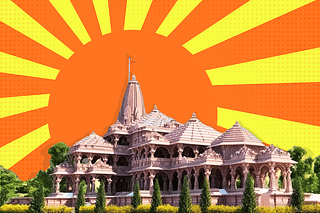
Ramlalla Will Be Adorned With A Surya Tilak At The Same Time Every Ram Navmi - Here's How It Will Work
“they’ll 'talk' about music”, why the music academy must take a conscience call and focus on reform and transparency.
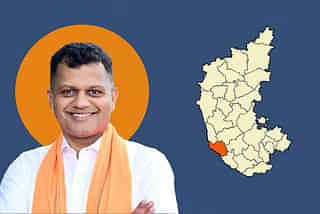
From Olive Green To Shades Of Saffron — Dakshina Kannada BJP Candidate Capt Brijesh Chowta On His Vision For Karnataka's Coast
Karnataka: 'winnability' is an excuse, congress fielding kin of ministers, mlas because no good candidates would bet on it, mysore maharaja in, pratap simha out — why the bjp may have arrived at this decision.
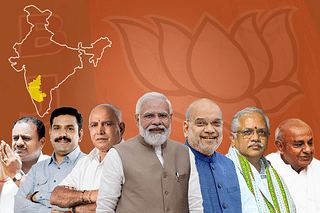
What To Expect From BJP's Karnataka List — Key Issues, Possible Candidates, Likely Outcome
Bengaluru cafe blast: karnataka home minister suspects intention to deter investors, bjp says congress hiding facts, 'pakistan zindabad': fsl report says video original; congress defends itself amid heavy criticism.

Indian Tourism Landscape – Spiritual and Religious Tourism
by Sanaya Jijina May 1, 2018 Hotel Operations , Travel & Tourism
S pirituality is entrenched into the very core of Indian culture. The country is the destination of choice for many who embark on a journey of spiritual growth and enlightenment. The Beatles put India on the world map when they ventured to Rishikesh to learn Transcendental Meditation at Maharishi Mahesh Yogi’s ashram back in 1968. Today, spiritual tourism is a growing industry, with travel companies and hotel chains beginning to recognise its immense potential and opportunities.
Spirituality is often confused with religion, with the words “spiritual” and “religion” often being used interchangeably. Spiritual tourism involves people traveling to places to find the meaning of life and attain inner peace through self-realisation and personal transformation; they may or may not follow a particular religion or faith. Rishikesh, McLeodganj, Varkala, Mount Arunachala, Auroville, Tiruvannamalai, Shirdi and Bodhgaya are some places people travel to for this purpose in the country. Religious tourism, on the other hand, involves devotees travelling individually or in groups to undertake pilgrimages or to visit temples and other places of worship. There are organised practices and rituals that followers are expected to adhere to. Amritsar, Ajmer, Fatehpur Sikri, Goa, Velankanni, Fort Kochi, Srirangam, Tirupati, Rameswaram, Thanjavur, Varanasi and Puri, to name a few, are popular for religious tourism in the country.
Evidently, India is dotted with spiritual and religious destinations, attracting tourists in large numbers each year, with the scales generally tipping in favour of the latter. The International Yoga Festival, held annually in Rishikesh, receives almost 2,000 participants from over a hundred countries. The Pushkar Fair (Rajasthan) attracts anywhere between 200,000-400,000 pilgrims over a two-week period every year. And, the Kumbh Mela, which is considered the largest conglomeration of religious pilgrims, witnesses millions in attendance. In fact, in 2013, numerous reports suggest that an estimated 120 million people visited the “Maha Kumbh Mela” in Allahabad over two months. While most of these fairs and festivals have a religious bent, they successfully attract international and domestic tourists in search of spirituality as well.
There are, however, many lesser known towns and cities in the country that are overshadowed by these popular religious and spiritual destinations. Add to this their poor accessibility, lack of infrastructure and ineffective marketing, many places in India still remain unexplored. Having said that, the renewed focus of the central government on tourism in general and spiritual tourism in specific, is promising. Funds have been allocated for the development of five spiritual tourist circuits and the Pilgrimage Rejuvenation and Spirituality Augmentation Drive. In addition, the Incredible India 2.0 campaign showcases India as a wellness and spiritual destination, promoting places such as Lahaul Spiti, famed for its monasteries, and Ayodhya, the setting of the epic Ramayana, apart from smaller cities like Rishikesh, Agra, Mathura-Vrindavan, Govardhan, Kanyakumari, Guwahati and Kurukshetra. While the campaign is certainly likely to enhance travel to these locales significantly, it brings us to another challenge; with so many tourists, is there adequate and quality accommodation for them to stay in?
One might expect the Indian hotel industry to be cashing in on this huge influx of current and anticipated visitors, but sadly, that is not the case yet. Hotel chains and organised travel companies have just recently begun targeting this massive untapped segment. Most of the aforementioned destinations still lack good quality hotel accommodation. For example, popular markets like Rameswaram and Srirangam have little to no branded hotel supply. The former now has the Hyatt Place, which was launched last year, while Srirangam, famed for its Ranganathaswamy Temple, has a Red Fox hotel on the outskirts of the town. Tirupati has a branded supply of approximately 550 rooms, while Varanasi has a little less than 400; this is surprising, as most branded hotels in Varanasi record occupancy north of 80% year-round, turning business away during festivals like Dev Deepavali. Also, interesting to note is that Rishikesh, the birthplace of yoga and the Yoga Capital of the world, does not have a single branded hotel. Hence, there is a clear opportunity for companies to enter such virgin markets and capitalise on one of the most popular forms of tourism in the country. With visitors from all economic strata of the society travelling to these highly under-supplied cities, there is an enormous opportunity for branded hotels, especially in the budget and economy space, with some of the larger destinations having the ability to support higher-positioned hotels as well.
In closing, even as the government draws inspiration from Rome in Italy and Mecca in Saudi Arabia, we believe that India has a diverse range of spiritual and religious destinations that are worthy of being international landmarks and can increase the country’s tourism revenue significantly. However, this initiative needs an all-round thrust including proactive government policies, adequate infrastructure, quality accommodation and effective marketing at a macro level, and cleanliness, better safety and security and inclusion of the local community at the micro level.
For more information, please contact Sanaya Jijina at [email protected]
Follow Us On
Recent posts.
- 2024 Hotel Management Contract Survey | South Asia
- India State Ranking Survey – 2024
- Untamed Wonders: An insight into India’s Wildlife Tourism Potential
- Untouched Lakshadweep: Is it Ready for the Proposed Tourism Surge?
- Ayodhya’s Gold Rush: Hospitality Boom in the Offing
Our Services
- Asset Management
- Energy Asset Management
- Executive Search
- Hotel Management Services
- Investment Advisory
- Project Execution Planning & Advisory
- Revenue Management Consulting
- Strategic Advisory
Submit a Comment Cancel reply
You must be logged in to post a comment.

Subscribe To Our Newsletter
Join our mailing list to receive the latest news and updates from our team.
You have Successfully Subscribed!
Share this post with your friends!

The Road To Travel
Religious Tourism in India- What is It and Famous Destinations?

Religious tourism is one of the fastest-growing industries in the world. Travellers worldwide come to see the pilgrimage sites as per their beliefs and engage in travel activities. In this, we can include Yoga tourism, faith tourism, and spiritual tourism they all are the same. It has been spreading at a crazy pace in countries like India. As of today, this market is niche and not widely spread but the way people accept other religions religious tourism will be a big market.
What is Religious Tourism?
As the name suggests, any kind of travel to religious or spiritual places is considered Religious Tourism. Based on their belief system a traveller visits holy sites. A Hindu goes to Mandir, a Muslim goes to Dargah, a Christian goes to Church and a Sikh goes to Gurudwara . Religious tourism in India has been famous as people strongly believe in gods. According to some reports, almost 40% of travel in India is for religious purposes.
In recent times we have seen many people from the USA and Europe also come to Indian places such as Vrindavan and Varanasi for Religious purposes.
Also read – Most Famous Temples in Jaipur | Seven Sister States of India
Famous Destinations for Religion-Based Tourism in the World
In the world there are many places which are famous for religious activities. Here the some of the best places for religious tourism in the world.
Popular Read – Cultural Tourism in India | Adventure Places in Jaipur
Places for Religious Tourism in India
India is the home of spirituality, and people firmly believe in the religious activities here. In every corner of this country, you can find the religious activity. Here are the best Indian places for religious tourism
Local Delights – Offbeat places to visit in Jaipur | Hidden Places to Visit in Vrindavan
Benefits of Religious Tourism
- Religious Beliefs – India is a country of belief and values, and they have strong feelings for this. Religious tourism provides convenience to them and makes their belief even more stronger. Kashi Vishwanath Corridor, Mahakal Corridor, Rishikesh – Yoga capital is a great example of how religion-based tourism is beneficial for the whole society.
- Spiritual Peace – Most people go for religious tours when they are in trouble. These holy sites have a positive energy that encourages a person to go beyond the limits. Visiting here gives the running thoughts a break so you feel the peace and make your way.
- Celebrate Religious Events – Almost all the festivals in the world are related to a religion. It can be Diwali for Indians, Eid for Muslims, Christmas for Christians, and more. People want to celebrate these events at religious locations so they can pay gratitude to god.
- Gratitude and Confession – Sometimes, people fail to express their feelings to people. Religious tourism gives them a chance to go to a place feel the positive vibe of the place and understand their mistake.
So, Religious tourism is the fastest-growing industry, it is directly connected to the beliefs of people. The more convenient this kind of travel is the more society gets benefits from it. It helps local people to earn money and employment. The government will earn for the industry that develops. Travelers will get to know the history, and culture and get mental peace at these locations. In our opinion, religion-based tourism is a win-win situation for all.
- Famous Food of Kolkata
- Adi Kailash Yatra Complete Information
- Offbeat Places to Visit in Rajasthan
- How to Plan Varanasi Travel
- Best Honeymoon Destinations in India
Related Posts

Best Places to Visit in Jodhpur – Tourist Attraction of City
Throbbing with colours, romance, beauty, glory, and warmth, Jodhpur, the desert city, was formally known as Marwar and was the…

Top Places to Visit in Rajasthan
There is everything in Rajasthan that will make a visitor wants to return. No matter the scorching heat of the…

Lakshadweep Best Things to do – Places to Visit | Flights | Hotels | Meals and More
Indians now consider the Lakshadweep as a great alternative for travel in place of Maldives. This came after 3 ministers…
Religious tourism in India
Statistics report on religious tourism in India
This report presents a range of statistics and facts on religious travel in India with a focus on initiatives to promote pilgrim tourism by the government. Although not an exhaustive list of all places of faith in the country, information on key destinations and sites has been curated.
Download your Report
Table of contents.
- Premium Statistic Distribution of travel and tourism GDP in India FY 2023, by type of visitor
- Premium Statistic Distribution of direct travel and tourism GDP in India FY 2023, by spending type
- Basic Statistic Share of tourists India 2019-2028, by expenditure
Pilgrim-focused initatives
- Premium Statistic Tourism promotion and publicity expenditure India FY 2021-2025, by type
- Premium Statistic Tourism expenditure for Swadesh Darshan India FY 2021-2025
- Premium Statistic Tourism expenditure for PRASHAD India FY 2021-2025
- Premium Statistic Funding value for Swadesh Darshan in India FY 2015-2019
Hajj pilgrims
- Premium Statistic Number of foreign and domestic Hajj pilgrims in Saudi Arabia 2022
- Premium Statistic Quota of foreign Hajj and Umrah pilgrims Saudi Arabia 2023 by country of origin
- Premium Statistic Number of Indians departing to Saudi Arabia 2009-2021
- Premium Statistic Number of Hajj pilgrims from India 1990-2023
Monuments of religious significance
- Premium Statistic Number of domestic visitors to ticketed monuments India FY 2023
- Premium Statistic Number of domestic visitors to Sarnath monuments India FY 2022
- Premium Statistic Number of domestic visitors to Bhubaneshwar monuments India FY 2022
- Premium Statistic Number of domestic visitors to monuments around Bhopal India FY 2022
- Premium Statistic Number of domestic visitors to Dharwad and Hampi circle monuments India FY 2022
- Premium Statistic Number of domestic visitors to Bengaluru and Goa monuments India FY 2023
Cities with spiritual destinations
- Premium Statistic Number of tourist visits in UP Buddhist circuit India 2019-2021, by destination
- Premium Statistic Number of tourist visits of Rishikesh in India 2016-2021
- Premium Statistic Number of tourist visits of Kedarnath in India 2016-2021
- Premium Statistic Number of tourist visits to Varanasi India 2021, by destination
- Premium Statistic Number of tourist visits to Ayodhya India 2021, by destination
- Premium Statistic Number of tourist visits to Mathura India 2017-2021
Siginificant religious sites
- Premium Statistic Estimated daily pilgrims India 2022, by select temple
- Premium Statistic Number of tourist visits of Vaishno Devi in India 2016-2021
- Premium Statistic Number of daily pilgrims to Tirumala Tirupati Devasthanams 2022-2024
- Premium Statistic Domestic tourist visits to Guruvayoor India 2018-2022
If this report contains a copyright violation , please let us know. Note that you will leave this page when you click the link.
Recommended and recent reports
Recommended statistics.
- Basic Statistic Business and leisure travel daily spending in Germany 2007-2022
- Premium Statistic Global travelers planning to cut personal expenses for leisure travel in 2023
- Premium Statistic Priorities when choosing a leisure travel destination in the U.S. 2023, by generation
- Premium Statistic Unit price of domestic overnight leisure travel in Japan 2016-2022
- Premium Statistic Unit price of domestic one-day leisure travel in Japan 2016-2022
Statista report shop
We provide information on industries, companies, consumers, trends, countries, and politics, covering the latest and most important issues in a condensed format.
Mon - Fri, 9am - 6pm (EST)
Mon - Fri, 9am - 5pm (SGT)
Mon - Fri, 10:00am - 6:00pm (JST)
Mon - Fri, 9:30am - 5pm (GMT)
- Immediate access to all reports
- Access to all Premium statistics
- Usage and publication rights
Religious tourism offer strong opportunities
Expenditure on religious tour and travel has more than doubled in recent years. on cue, government of india has allotted us$185 million in the 2018-19 budget for the development of tourist circuits under the swadesh darshan and the pilgrimage rejuvenation and spiritual augmentation drive (prasad) schemes.
January 14, 2019
13 tourism circuits have been identified - Buddhist Circuit, Himalayan Circuit, Krishna Circuit, Spiritual Circuit, Ramayana Circuit and Heritage Circuit
The tourism industry employs about 6 per cent of India’s total workforce and contributed US$234 billion towards the national GDP in 2017
Government of India has set a target of 20 million foreign tourist arrivals by 2020 and aims to double foreign exchange earnings from the sector
The has Government allotted US$185 million for the Swadesh Darshan and the Pilgrimage Rejuvenation and Spiritual Augmentation Drive (PRASAD)

Home » News » Opportunities » Religious tourism offer strong opportunities
Close to 60 per cent of domestic tourism in India is driven by religious fervour. And unlike most other types of travel and tourism, religious tourism target every age and income group, thus claiming the largest market. A study conducted by Delhi-based Lokniti – Centre for Study of Developing Societies (CSDS) in 2017 had highlighted that one in four Indians was oriented towards touring religious places. In India, religious places are both a preferred pilgrimage destination as well as a location of choice for vacation. Pilgrimage being predominantly a family affair, data suggest that the expenditure on religious travel has more than doubled in recent years.
Meanwhile, religious tourism is both contributing and deriving benefits from the overall growth in the travel and tourism sector in the country. A growing middle class and rising disposable income have resulted in shaping the dynamic growth trend. Apart from India residents, the segment’s popularity with overseas Indians as well as foreigners has grown steadily grown over the years.
The tourism industry employs about 6 per cent of India’s total workforce and contributed US$234 billion towards the national GDP in 2017. According to a report by the India Brand Equity Foundation, by 2028, this share is expected to be around US$492.2 billion. Government of India has set a target of 20 million foreign tourist arrivals (FTAs) by 2020 and aims to double foreign exchange earnings from the sector. In 2017, spending by foreign tourists accounted for US$26 billion. The Government also plans to attract US$100 billion foreign direct investment in the tourism sector as a whole and generate up to 100 million jobs over the next five years.
In search of spiritual experience
With Yoga retreats and Ayurvedic spas gaining popularity among domestic and foreign tourists alike, religious tourism in India is also getting a spiritual and a healthcare twist. An increasing number of domestic and international tourists, looking for indigenous cultural experiences, visit places such as Rishikesh, Varanasi, Bodh Gaya and Pondicherry to explore the idea of holistic and sustainable living. The huge interest in retreats and spiritual travel as showcased by foreign tourists has prompted the Government to promote international inbound tourism by extending ‘Tourist Visa on Arrival (TVOA) scheme’ to 11 countries including Japan, Singapore, the Philippines, Finland, Luxembourg, New Zealand, Cambodia, Laos, Vietnam, Myanmar and Indonesia.
Tourism to Buddhist heritage sites has been a great attraction for Japanese visitors to India. In August 2018, Indian also hosted the 6th International Buddhist Conclave that was attended by 29 nations. In the last few years, the Government has signed 48 bilateral or tripartite agreements for mutual promotion of tourism with international bodies such as the International Finance Cooperation and with countries such as Japan, Malaysia and Indonesia. The weekend travel culture picking up with equal pace in India has created the potential for developing lesser known and off-beat religious and spiritual tourist destinations around the more well-known places.
As one of the 25 focused sectors under the ‘Make in India’ programme, the Government has allowed 100 per cent FDI under the automatic route in the tourism and hospitality sector
Policy push for tourism promotion.
To promote primary and related tourist destinations, Ministry of Tourism has launched the Swadesh Darshan Scheme in 2014-15 to integrate development of theme-based tourist circuits. The idea is to develop tourist areas with high tourism value, competitiveness and sustainability in mind. Under the scheme, 13 thematic circuits have been identified, namely Buddhist Circuit, North-East India Circuit, Coastal Circuit, Himalayan Circuit, Krishna Circuit, Desert Circuit, Eco Circuit, Wildlife Circuit, Tribal Circuit, Rural Circuit, Spiritual Circuit, Ramayana Circuit and Heritage Circuit. The scheme is being implemented with the help of public funding and Corporate Social Responsibility (CSR) initiatives of central public sector undertakings and the private sector.
In the 2018-19 Union Budget, the Government allotted US$185 million for Integrated development of tourist circuits under two schemes – the Swadesh Darshan and the Pilgrimage Rejuvenation and Spiritual Augmentation Drive (PRASAD). In the last five years, more than USD$845 million have been sanctioned by the Government of India to execute 73 projects under the two schemes.
As one of the 25 focused sectors under the ‘Make in India’ programme, the Government has allowed 100 per cent FDI under the automatic route in the tourism and hospitality sector. Seeking private and foreign investments for development of hotels, resorts and recreational facilities, the Government is also striving to improve the ease of doing business in the tourism sector in India. Between April 2000 and June 2018, the tourism and hotel industry in India received FDI worth US$11.4 billion. Apart from this, the Government is taking measures to streamline a sector that has long been governed by different state regulations. This is touted to improve performance.
Cooperation in religious site development
Improved management will open up new investment opportunities in the vast religious tourism space. With millions visiting pilgrimage sites around India each year, investments in hospitality and transport infrastructure as well as technology employment, among other facets, have become a necessity. This opportunity has come despite the fact that most religious centres in the country have short but intense seasons. Various traditions and cultural practices instigate increased footfall of tourists which means an increased load on the transport, city infrastructure and site management. Waste management is another problem area.
Currently, India’s religious tourism destinations are not equipped with ways and means to deal with the challenges thrown up by high footfalls. In a bid to resolve these issues, the Government is looking to create a national tourism authority to streamline processes and implement checks and balances. International tie-ups and agreements with different countries have also offered new solutions. There are challenges that the Government is looking to tackle around religious tourism, meanwhile, they offer an opportunity for Indian and foreign firms to innovate and create business solutions.
Recent Articles
India’s mobile phone exports reach us$ 15 bn..
India’s mobile phone exports surged by over 35% to a …
India will continue to drive global growth: IMF Executive Director
Krishnamurthy V Subramaniam, the Executive Director of the International Monetary …
Apple’s iPhone exports from India surge
The export of iPhones from India has experienced a remarkable …

Lok Sabha Elections 2024: Will UCC benefit BJP in Uttarakhand? 5 key issues before the state goes to polls on April 19
Lok Sabha Elections 2024: The Bharatiya Janata Party (BJP) has promised in its manifesto to introduce the Uniform Civil Code (UCC) across India if it comes to power. This code would replace existing personal laws like the Hindu Marriage Act, the Parsi Marriage and Divorce Act and the Christian Marriage Act with a single set of laws for all citizens.
In February, Uttarakhand became the first Indian state after Independence to approve the UCC. As it goes to polls on April 19, let’s find out the key electoral issues in the state.
The UCC creates common laws for marriage and inheritance applicable to all citizens, irrespective of religion, marking a significant departure as India's first such law. However, it excludes Scheduled Tribes.
Also Read: PM Modi says 'this decade belongs to Uttarakhand', outlines plans for 5G, tourism
Criticism arises from stringent regulations on live-in relationships, mandating registration with potential penalties, including jail time for non-compliance. Some argue that the UCC unfairly encroaches on the religious customs of specific groups.
Religious tourism
Every year, millions of pilgrims flock to Haridwar, a significant religious site, causing heavy traffic and straining local facilities, particularly during major events like the Kumbh Mela. This influx adversely affects the quality of life for locals and underscores the urgent need for improved tourism management.
Sugarcane farmers
Over 1 lakh sugarcane farmers in Haridwar are grappling with delayed payments and insufficient compensation for damaged crops. Sugarcane prices in Uttarakhand are pegged to those in Uttar Pradesh.
Also Read: Uttarakhand tunnel rescue hero spends night on footpath after DDA demolishes home: ‘This is what I get in return?'
However, local farmers don't enjoy the same benefits such as subsidised electricity for irrigation. This disparity has plunged the farmers into significant financial distress.
Disaster management
Floods and landslides frequently plague Uttarakhand, especially in Haridwar and the Garhwal region. Climate change exacerbates these natural disasters, leading to substantial losses to farmers and perilious conditions for residents.
Also Read: India to deploy 10,000 additional soldiers along border with China in Himachal Pradesh, Uttarakhand
The severity of the 2023 floods led to sightings of wild animals in residential areas, highlighting the pressing necessity for enhanced disaster management strategies and environmental protection policies.
Migration and employment
Many young people from remote areas like Garhwal are migrating to cities for better opportunities. This demographic shift is changing the population composition of rural Uttarakhand, leaving behind mostly older people. It's important to generate more local jobs to stop this migration and help these communities thrive again.
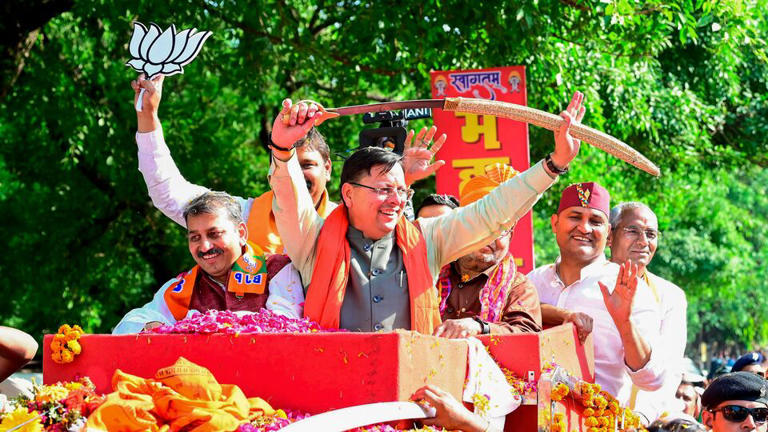

IMAGES
VIDEO
COMMENTS
Religious tourism in India is a focus of Narendra Modi's national tourism policy. Uttarakhand has been popular as a religious and adventure tourism hub. Tourism by religion. India-origin religions. Since India is birthplace of Indian-origin religions, namely Hinduism, Jainism, Buddhism, and Sikhism, their holiest sites and highest concentration ...
Domestic tourism is a key driver within the market. While Hinduism is almost synonymous with the region, India is also the birthplace of several other religions including Buddhism, Jainism, and ...
List of 30 Famous Religious Tourism Places in India. Vaishno Devi Temple, Jammu Kashmir. Golden Temple Amritsar, Punjab. Sun Templ in Konark, Odisha. Jagannath Temple in Puri, Odisha. Somnath Jyotirlinga, Gujarat. Ranakpur Temple, Rajasthan. Tirumala Venkateswara Temple in Tirupati, Andhra Pradesh. Hemkund Sahib, Uttarakhand.
In 2021, the numbers stood at 677 million and 1.05 million, respectively. • More than 60% of tourism in India is associated with religious and spiritual tourism. • The places of religious tourism earned 1,34,543 crore in 2022, up from 65,070 crore in 2021, as per data released by the Ministry of Tourism. • 2023 travel predictions claim ...
The places of religious tourism earned ₹ 1,34,543 crore in 2022, up from ₹ 65,070 crore in 2021, data released by the ministry of tourism said. In 2018, the revenue was ₹ 1,94,881 crore ...
Image used for representational purpose only With the religious and spiritual sectors accounting for over 60 per cent of all tourism, India has become a significant player in the spiritual tourism landscape. Pilgrimage statistics from recent years depict the scale of this phenomenon. In 2022 alone, India witnessed an astounding 1,433 million domestic tourists undertaking pilgrimages, while 6. ...
India, however, is somewhat unique in that religious tourism, mostly in the form of pilgrimage, is the number one contributor to the country's domestic tourism. India's Hindu religious sites ...
Religious tourism has a big future in India. India is richly endowed with ancient temples and religious festivals. Religions originating in India, be it Hinduism, Sikhism, Jainism, Buddhism, have a vibrant culture and spiritual philosophy. Together they present a viable, alternative way of life as compared to materialism and
Join us on a mesmerizing expedition as we explore the enchanting world of religious tourism in India. Step into a realm where ancient history, unwavering faith, and rich cultural heritage collide to create an extraordinary tapestry of spiritual experiences. With IndianCulture.com as our trusted guide, we will traverse through India's sacred ...
Religious tourism in India . Religious tourism in India is huge. Spirituality is a massive part of Indian culture, with the main religion being Hinduism. 79.8% of the population identify as Hindu, with 14.2% practising Islam and 2.3% being Christians. Sikhism and Buddhism, while not as popular in India now, were both actually founded here. ...
Abstract. Religious tourism constitutes the dominant form of tourism in India and yet little is known about how it is governed and managed. This paper aims to contribute to a better understanding ...
The competitive edge is therefore a given. The earnings from places of religious tourism almost doubled to INR 1,34,543 crores in 2022, from INR 65,070 crore in 2021, as per data released by the Ministry of Tourism. Religion and spirituality though distinctly different are closely connected. India has also taken yoga to the world and was ...
Religious tourism is estimated to be the biggest segment within India's tourism umbrella, and according to SOTC Travel, a tourism firm, has clocked a near 40% on-year growth last year.
Religious tourism has been in practice for centuries in India. There are several religious tourist spots spread across India that belong to different religions, including Hinduism, Buddhism, Jainism, Sikhism, and Islam. Ujjain city is located in the Indian state of Madhya Pradesh, and has been selected as a case study for this paper because of its 5000 year long history. Considering the ...
religious tourism and of pilgrimage in the tourism context, despite the rapid evolution of the former into a postmodern form of contemporary pilgrimage (Collins- Kr einer, 2010, 2016a).
In 2021, the numbers stood at 677 million and 1.05 million, respectively. More than 60 per cent of tourism in India is associated with religious and spiritual tourism. Some of the other sites that ...
Faith-based tourism represents a key driver of regional growth, with religious attractions responsible for a large portion of arrivals in certain markets, especially during pilgrimages and other festivals. The Indian state of Gujarat, for example, saw tourist inflows reach 44.8m in 2017, with 36% of that number coming for spiritual purposes.
Religious tourism in India can take many forms, including yoga tourism; the country has sites important to Buddhism, Islam, Sikhism and Hinduism, as well as magnificent architecture and, for some travellers, the attraction of orientalism. Japan too offers beautiful religious places from Buddhist temples to Shinto shrines.
Indian Tourism Landscape - Spiritual and Religious Tourism. S pirituality is entrenched into the very core of Indian culture. The country is the destination of choice for many who embark on a journey of spiritual growth and enlightenment. The Beatles put India on the world map when they ventured to Rishikesh to learn Transcendental Meditation ...
Religious tourism in India has been famous as people strongly believe in gods. According to some reports, almost 40% of travel in India is for religious purposes. In recent times we have seen many people from the USA and Europe also come to Indian places such as Vrindavan and Varanasi for Religious purposes. ...
Statistics report on religious tourism in India. This report presents a range of statistics and facts on religious travel in India with a focus on initiatives to promote pilgrim tourism by the ...
Religious tourism offer strong opportunities Expenditure on religious tour and travel has more than doubled in recent years. On cue, Government of India has allotted US$185 million in the 2018-19 Budget for the development of tourist circuits under the Swadesh Darshan and the Pilgrimage Rejuvenation and Spiritual Augmentation Drive (PRASAD) schemes
The regression results show that religious tourism has been effective by 0.77 on income, 0.66 on employment, and 0.72 on the economy of traditional settlements. In fact, the development of ...
Religious tourism Every year, millions of pilgrims flock to Haridwar, a significant religious site, causing heavy traffic and straining local facilities, particularly during major events like the ...